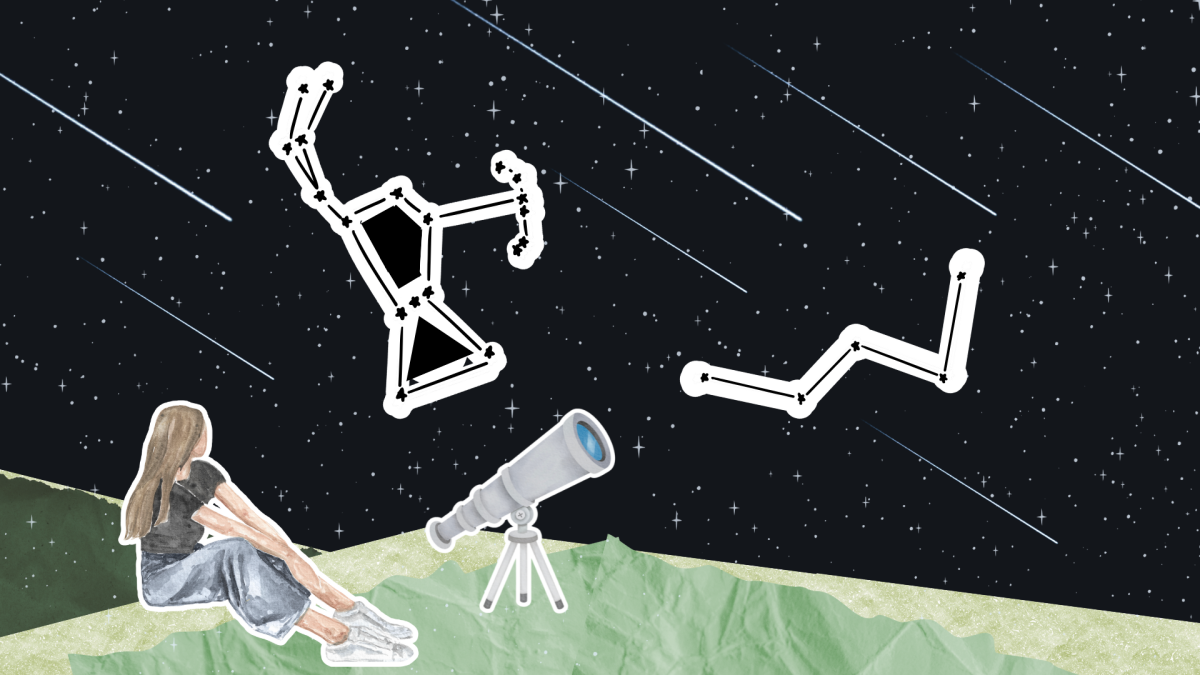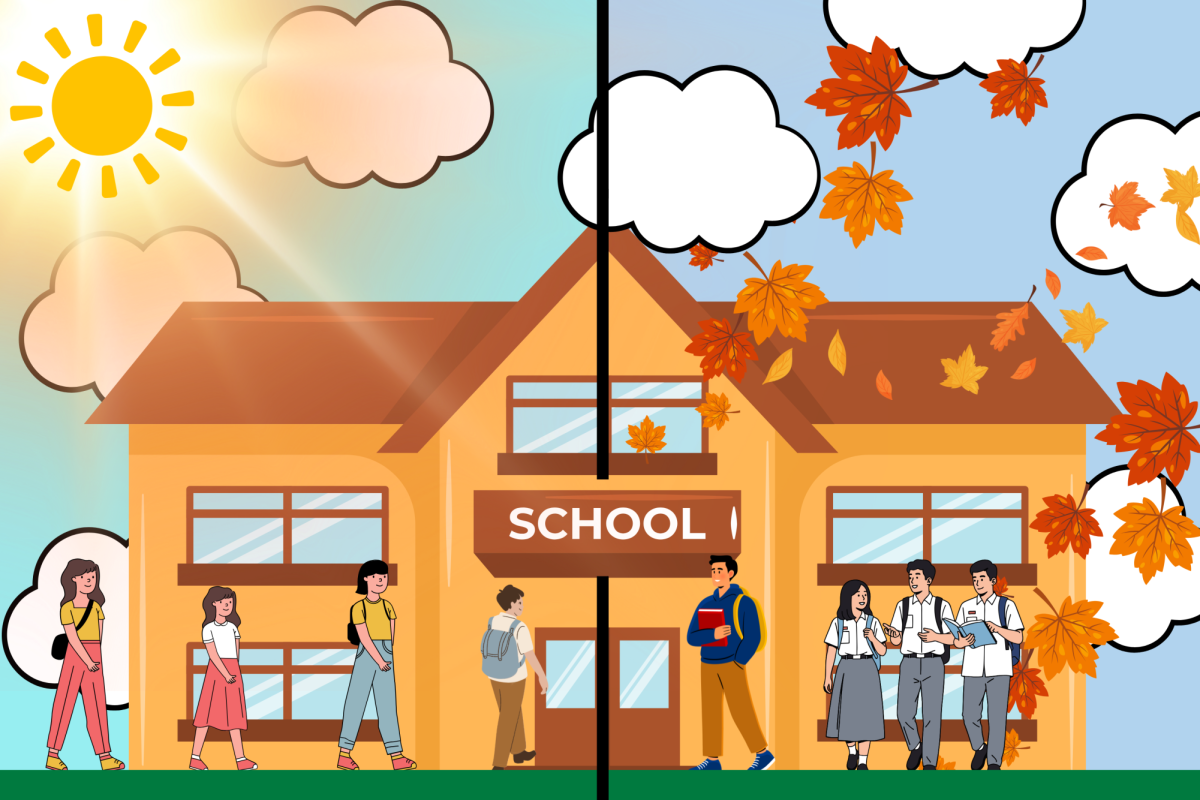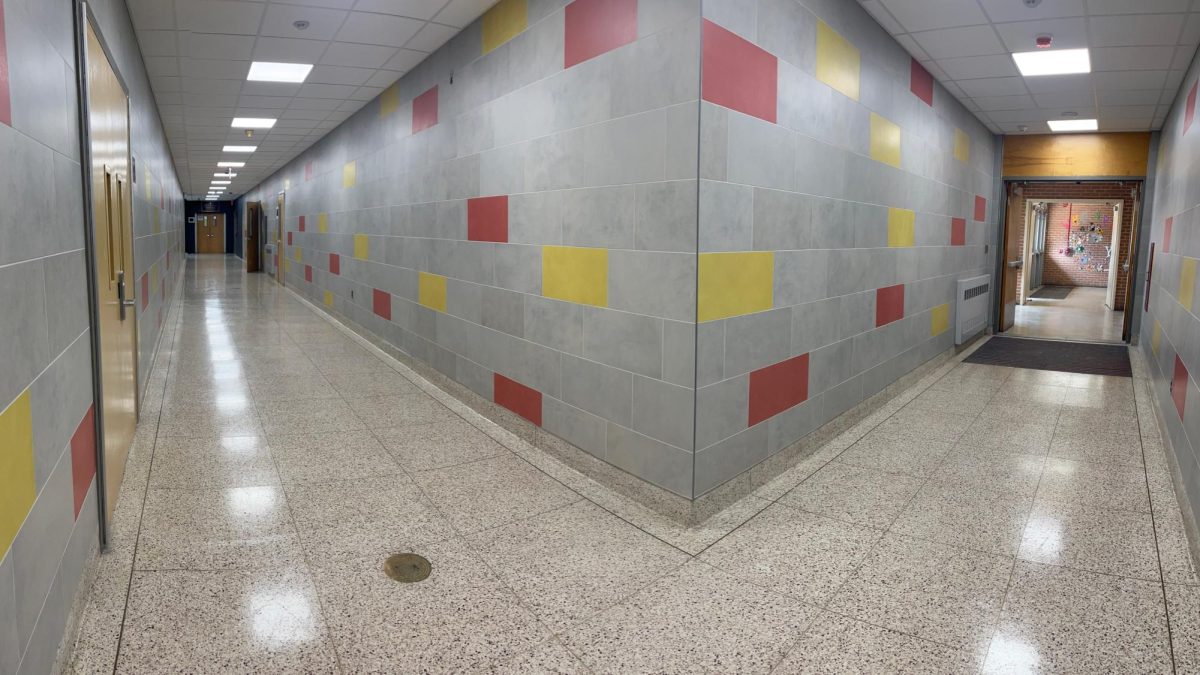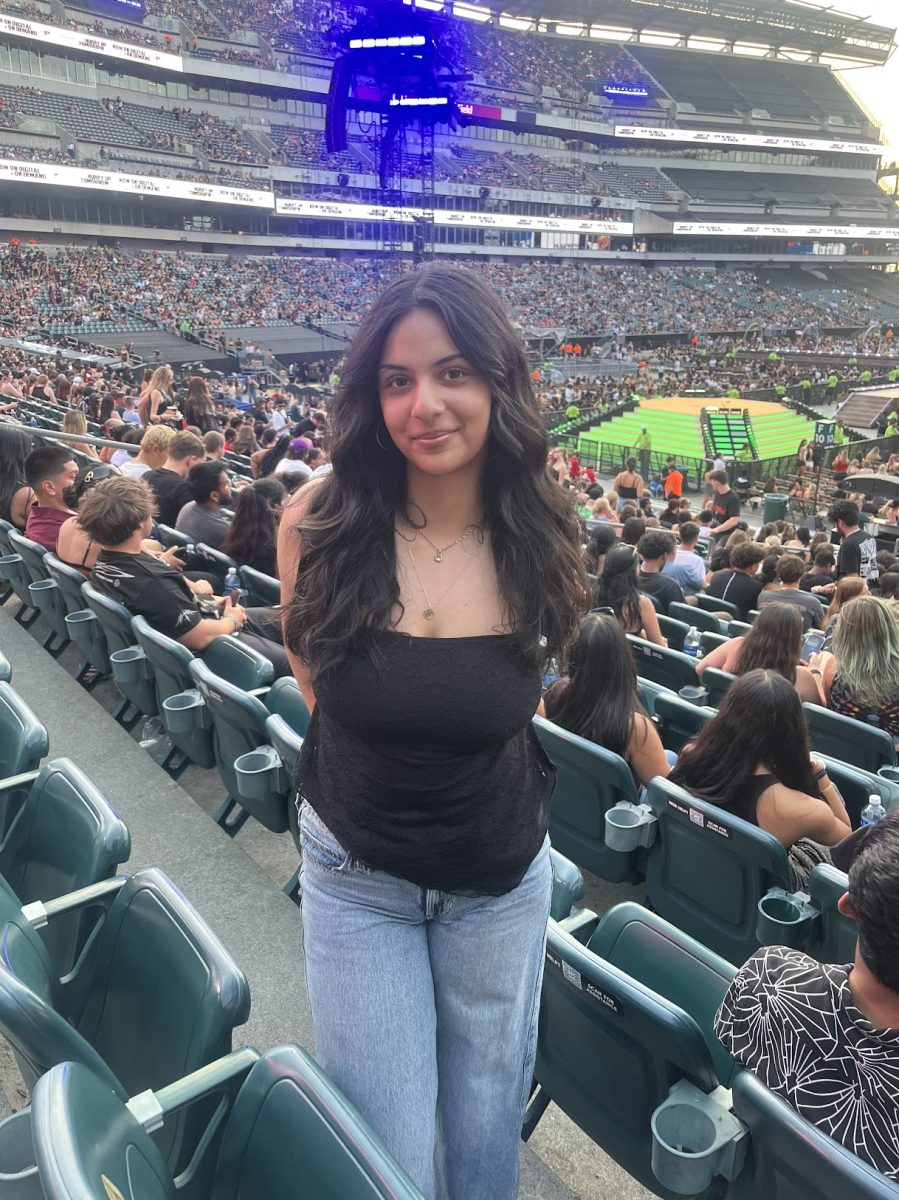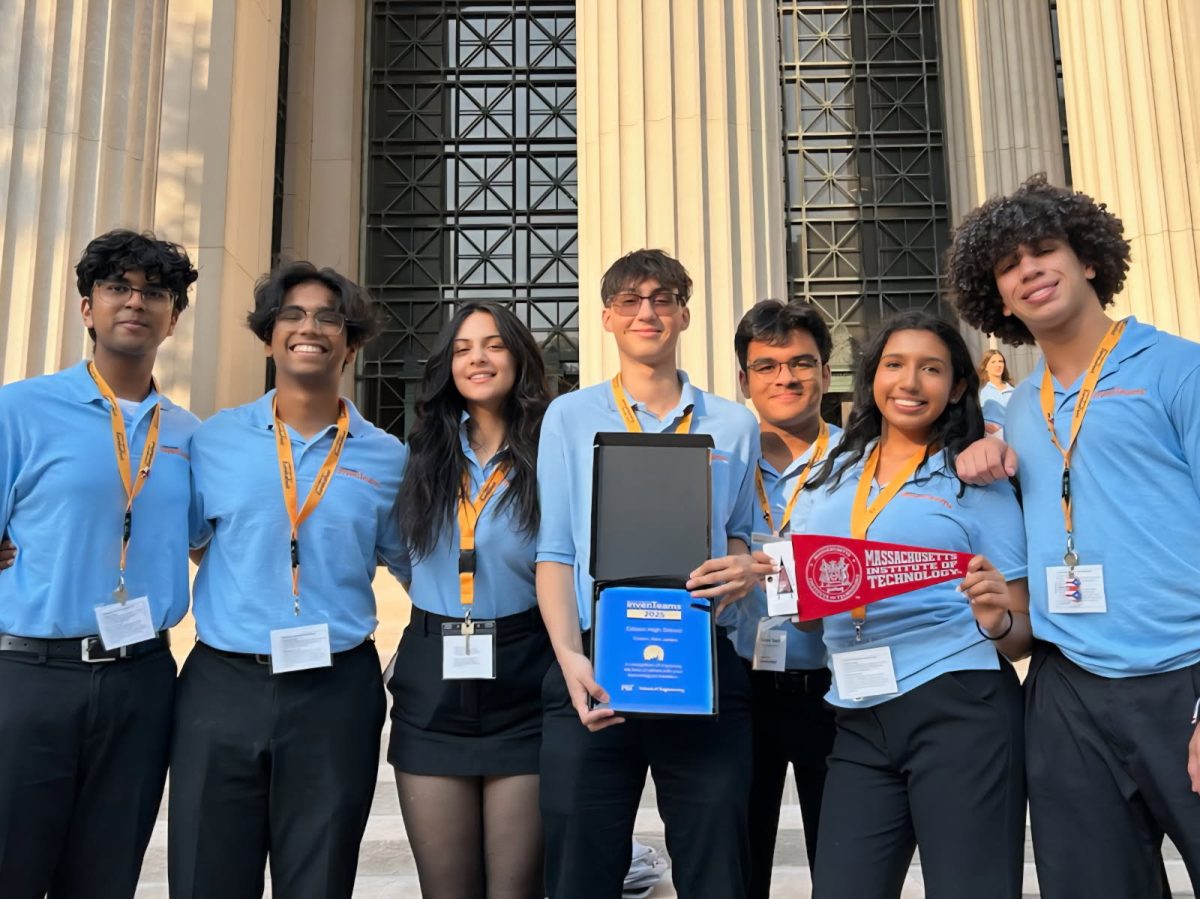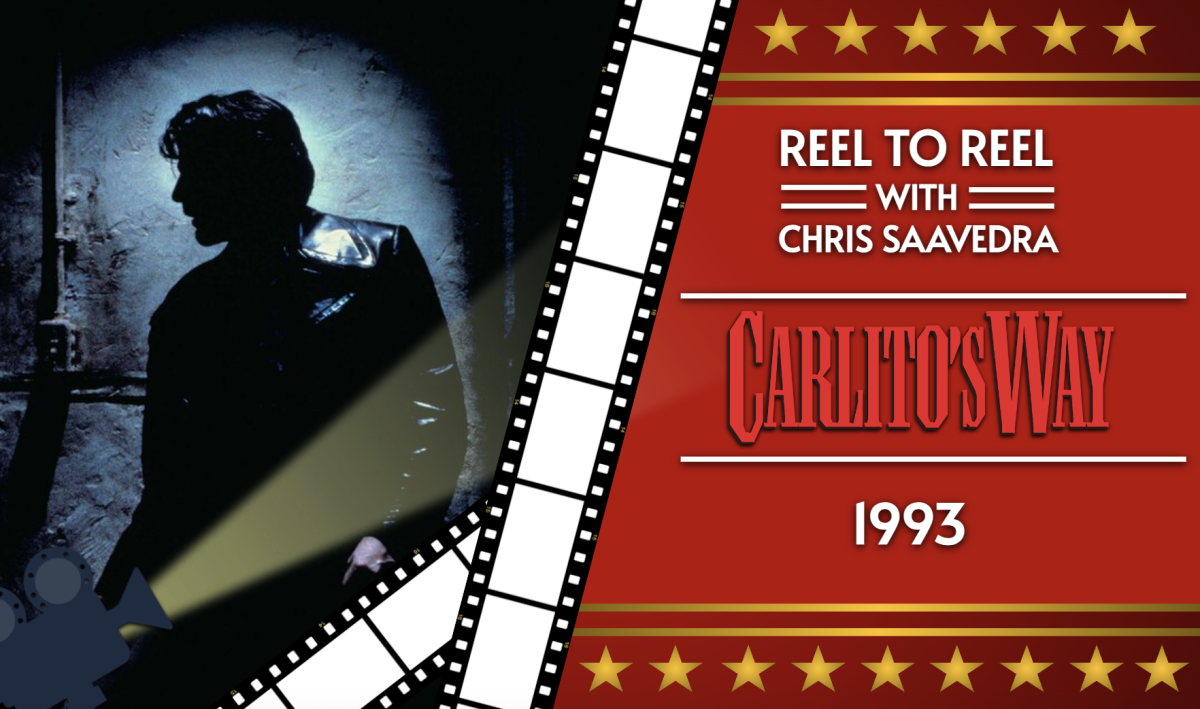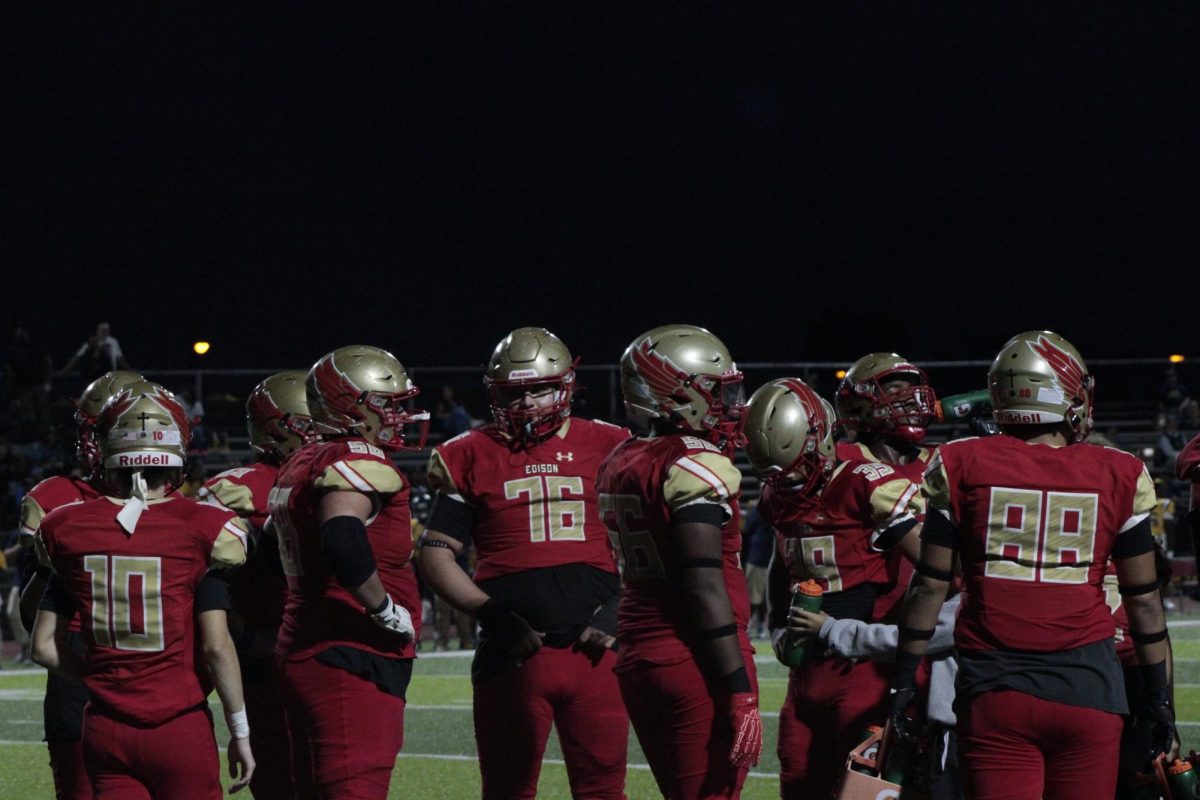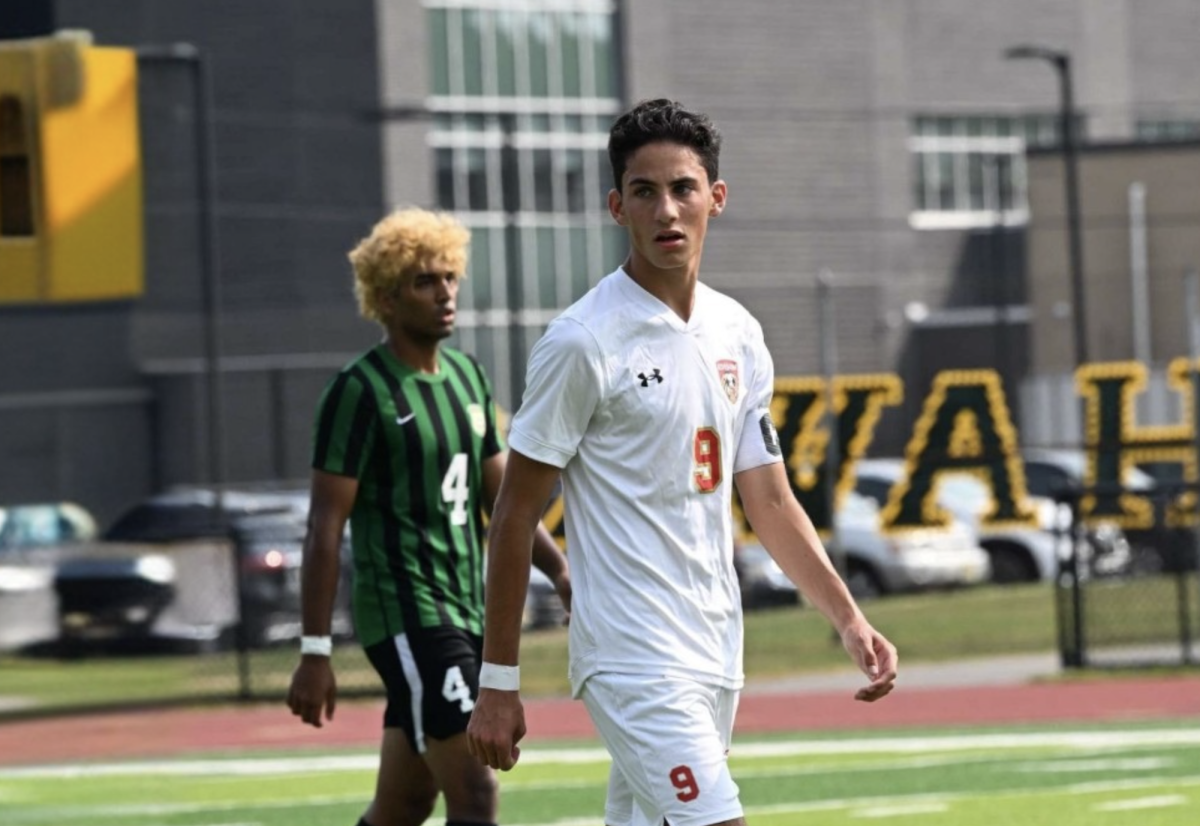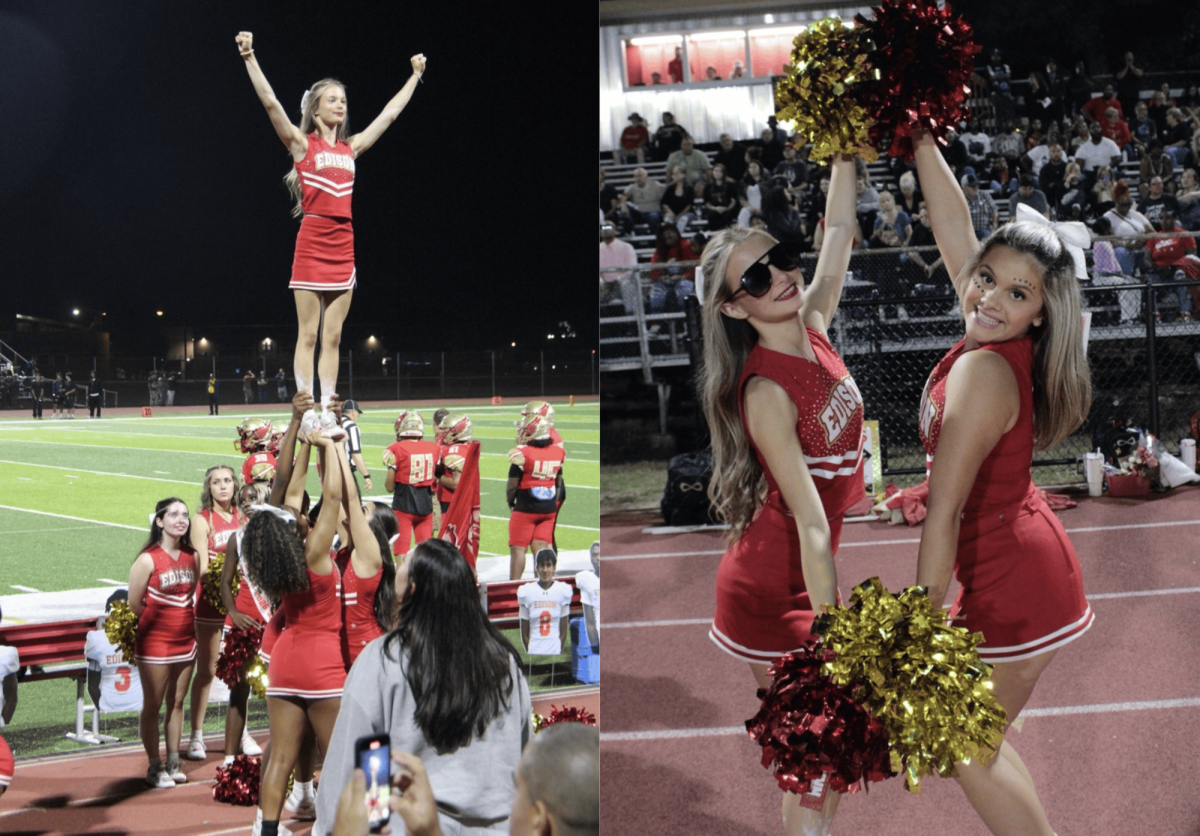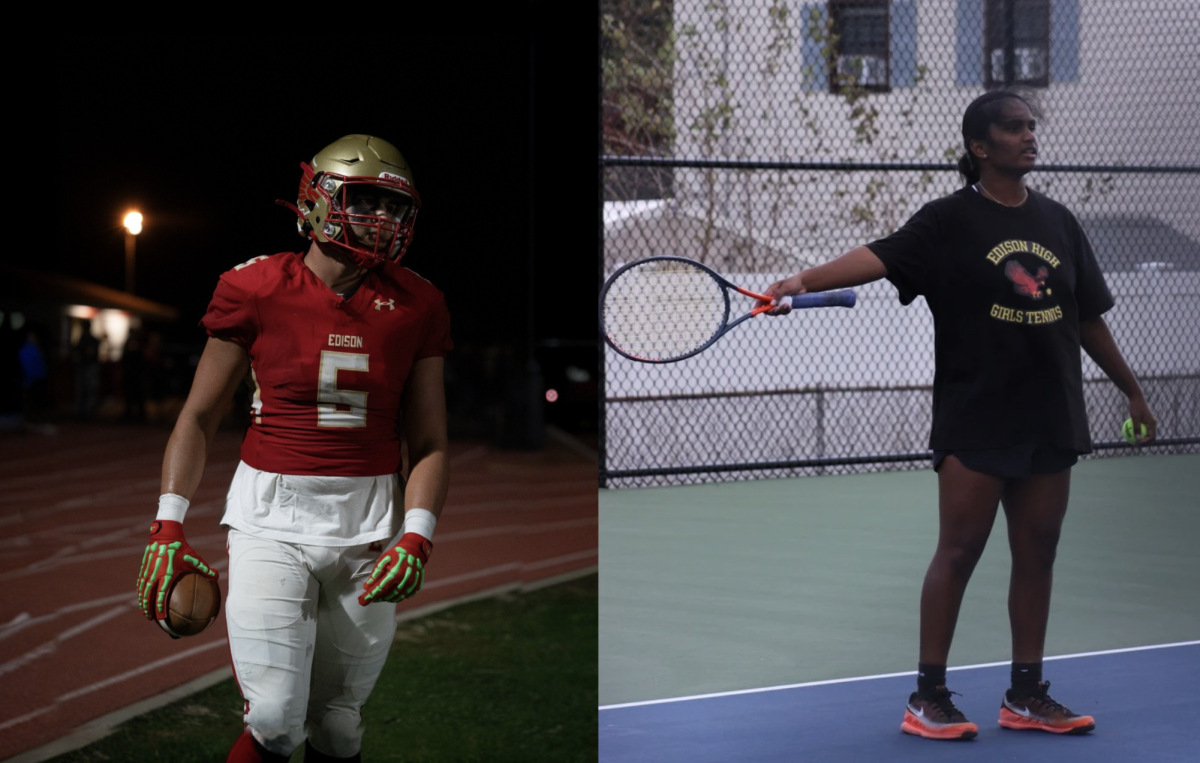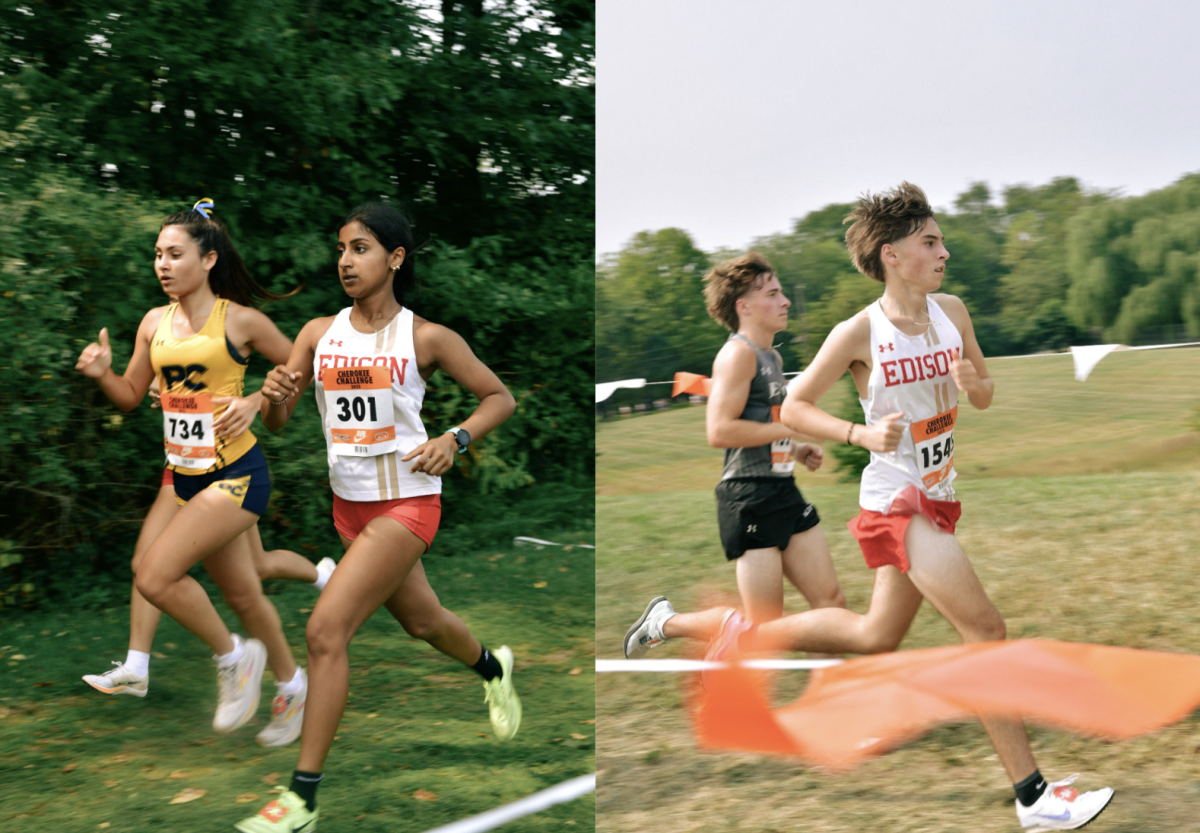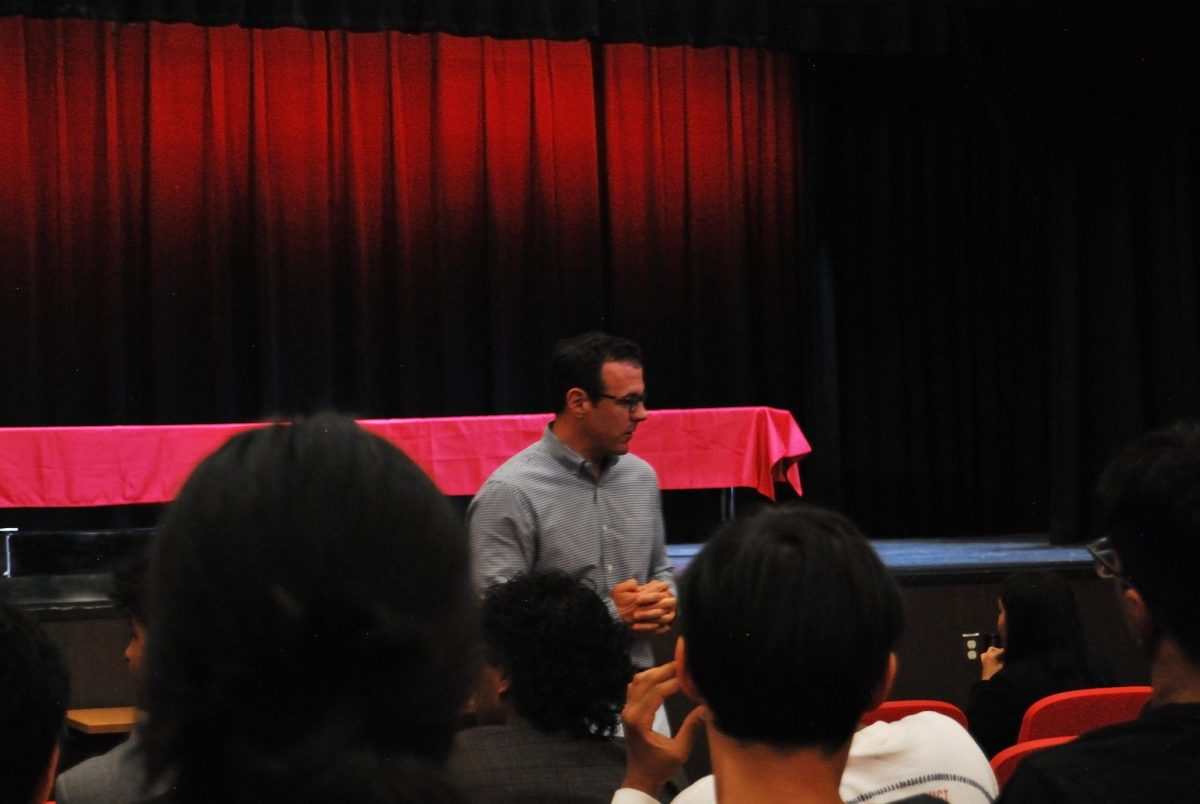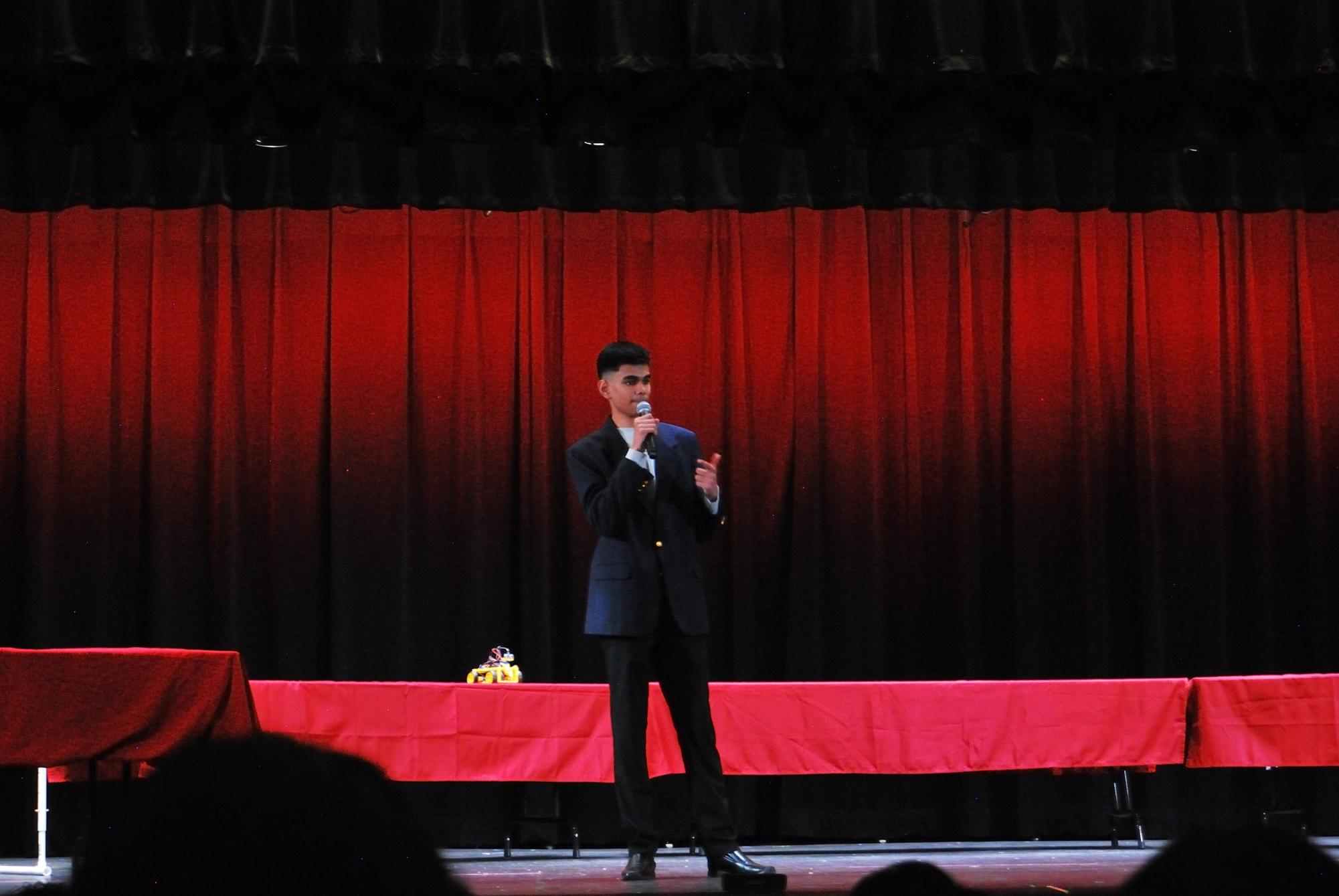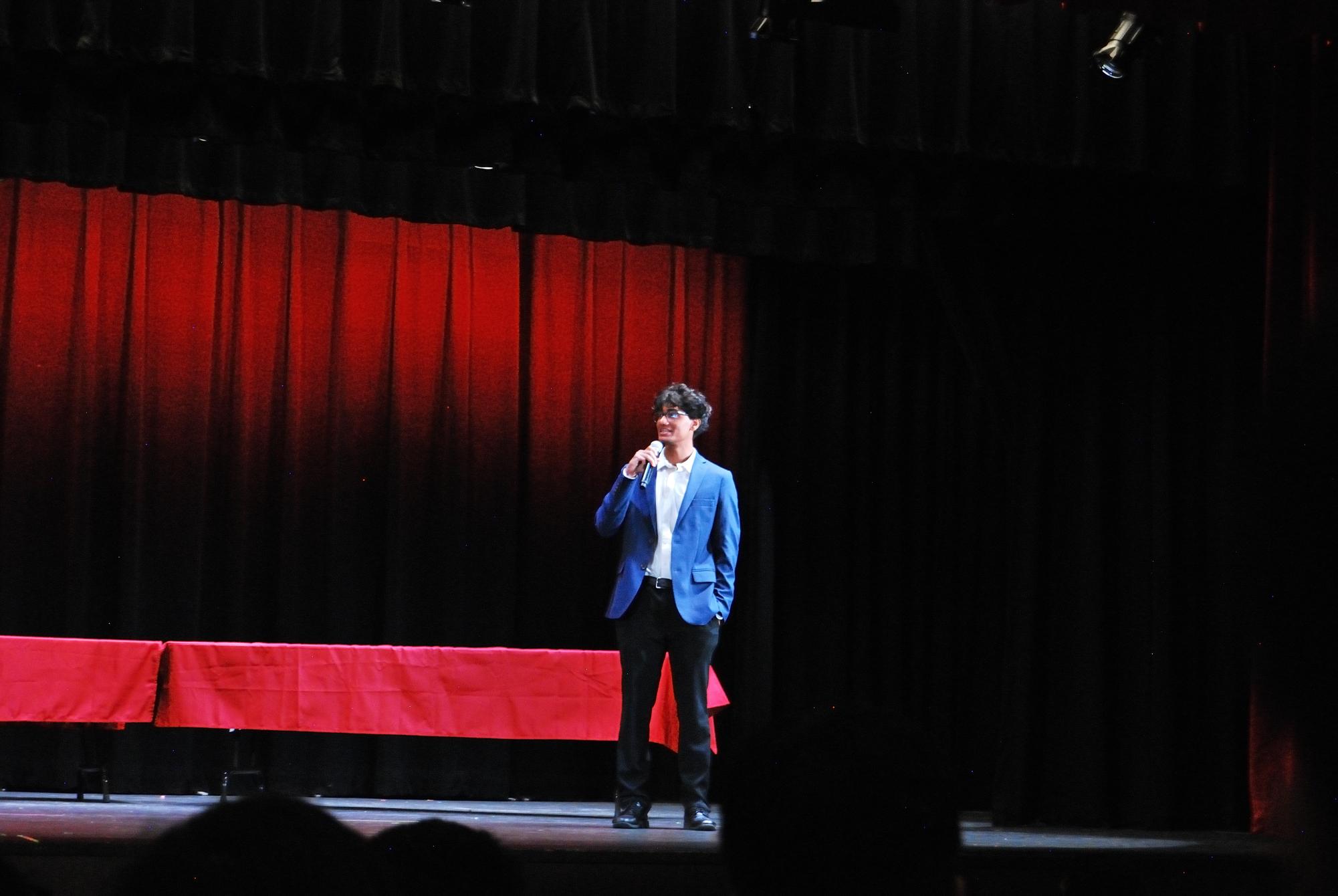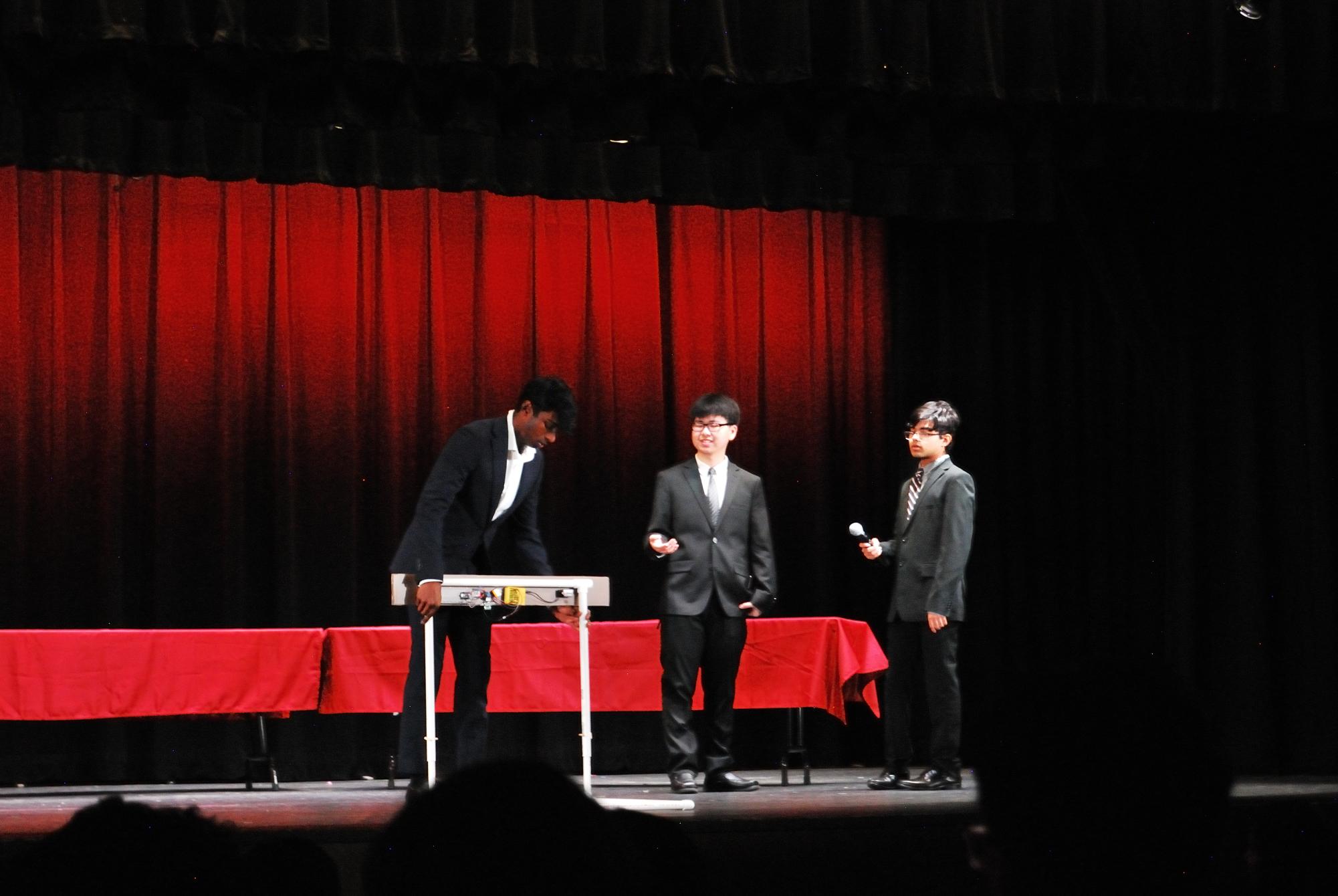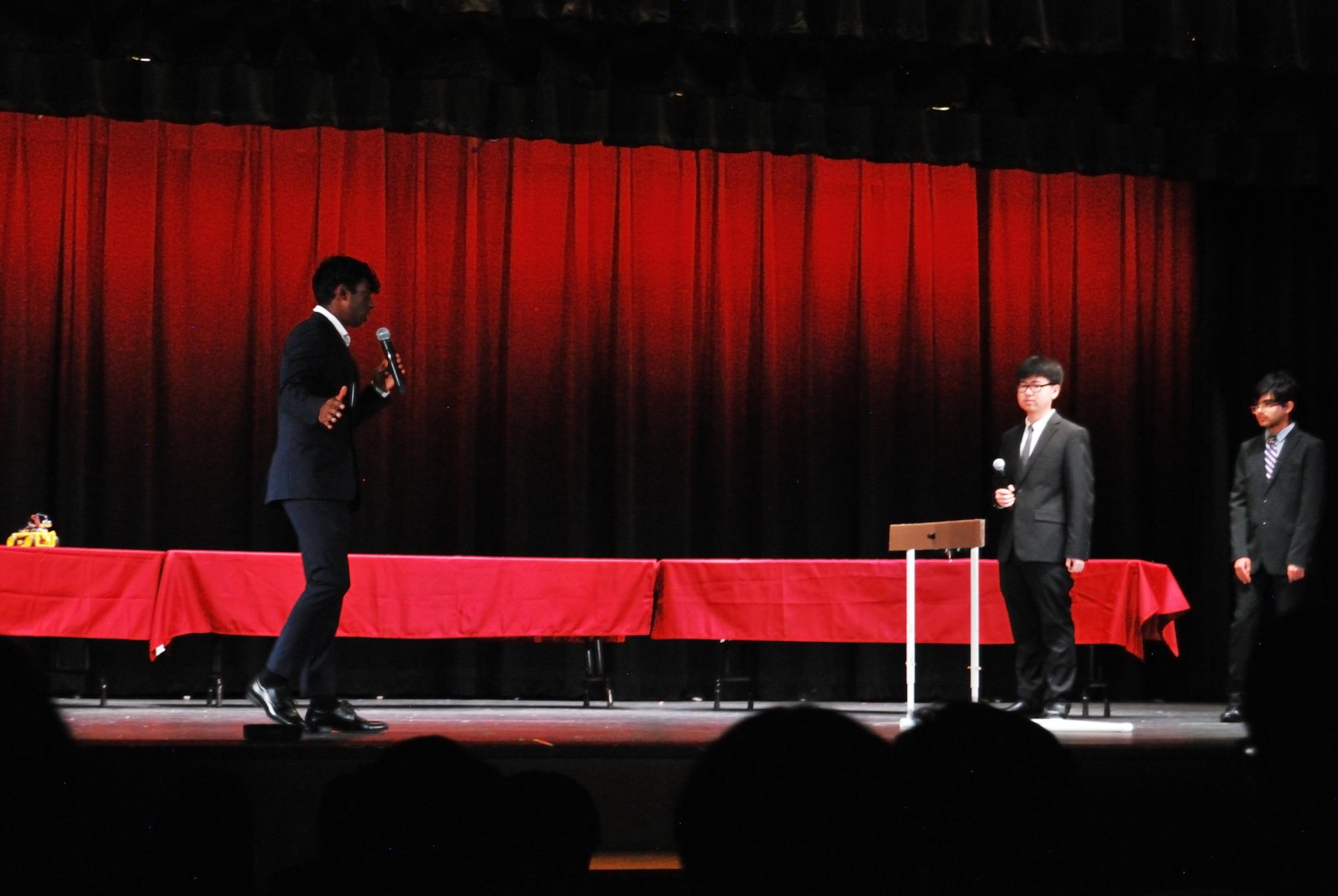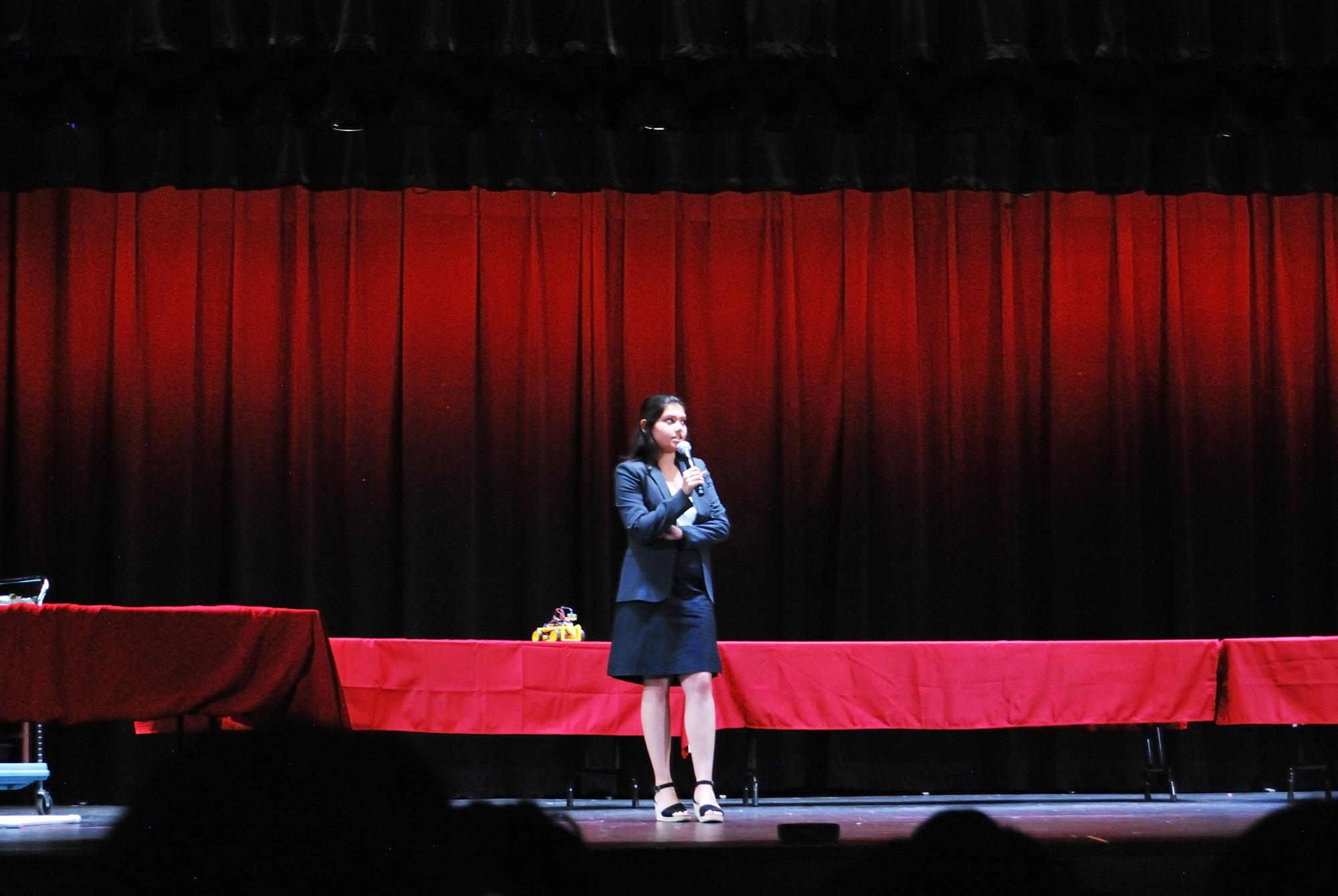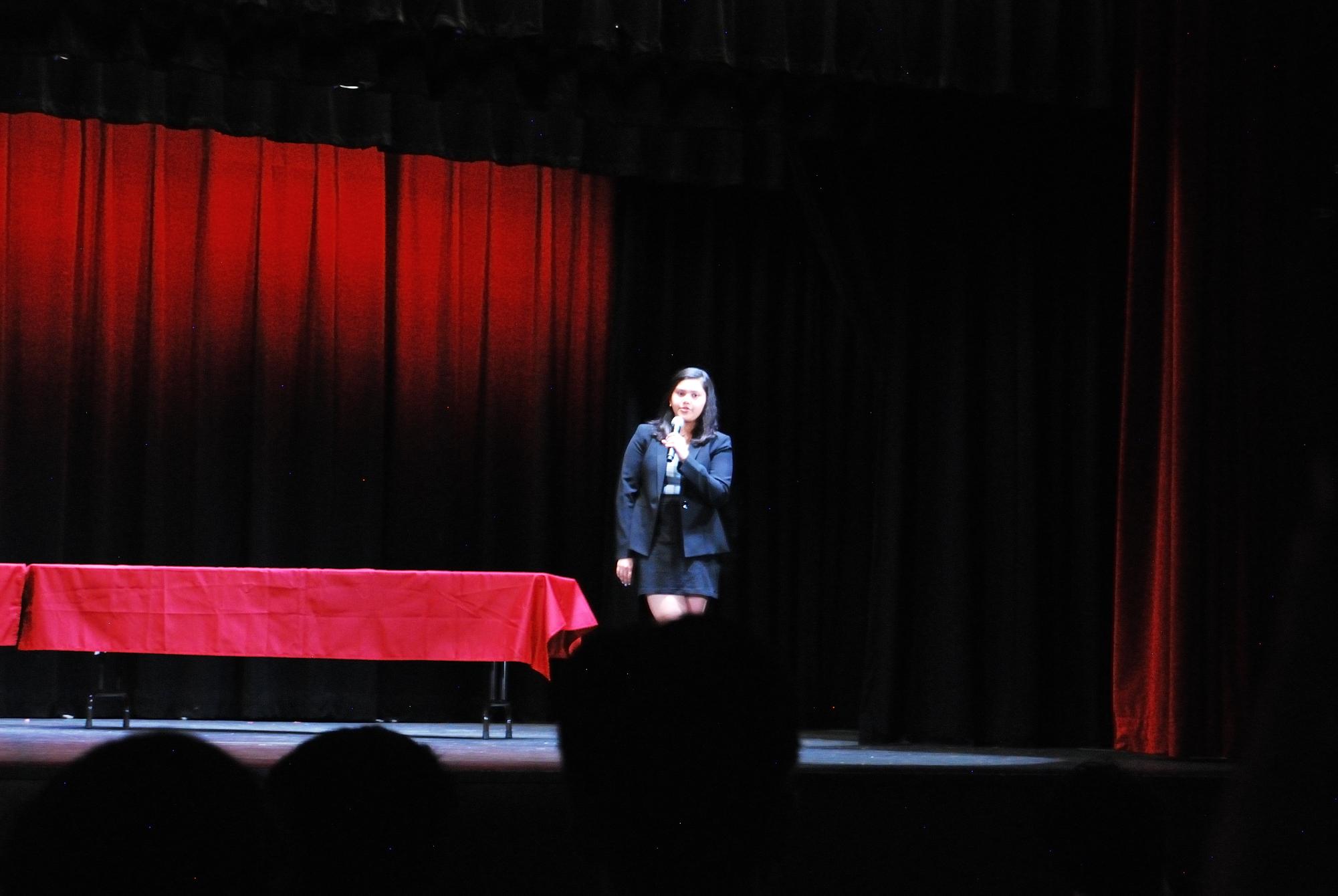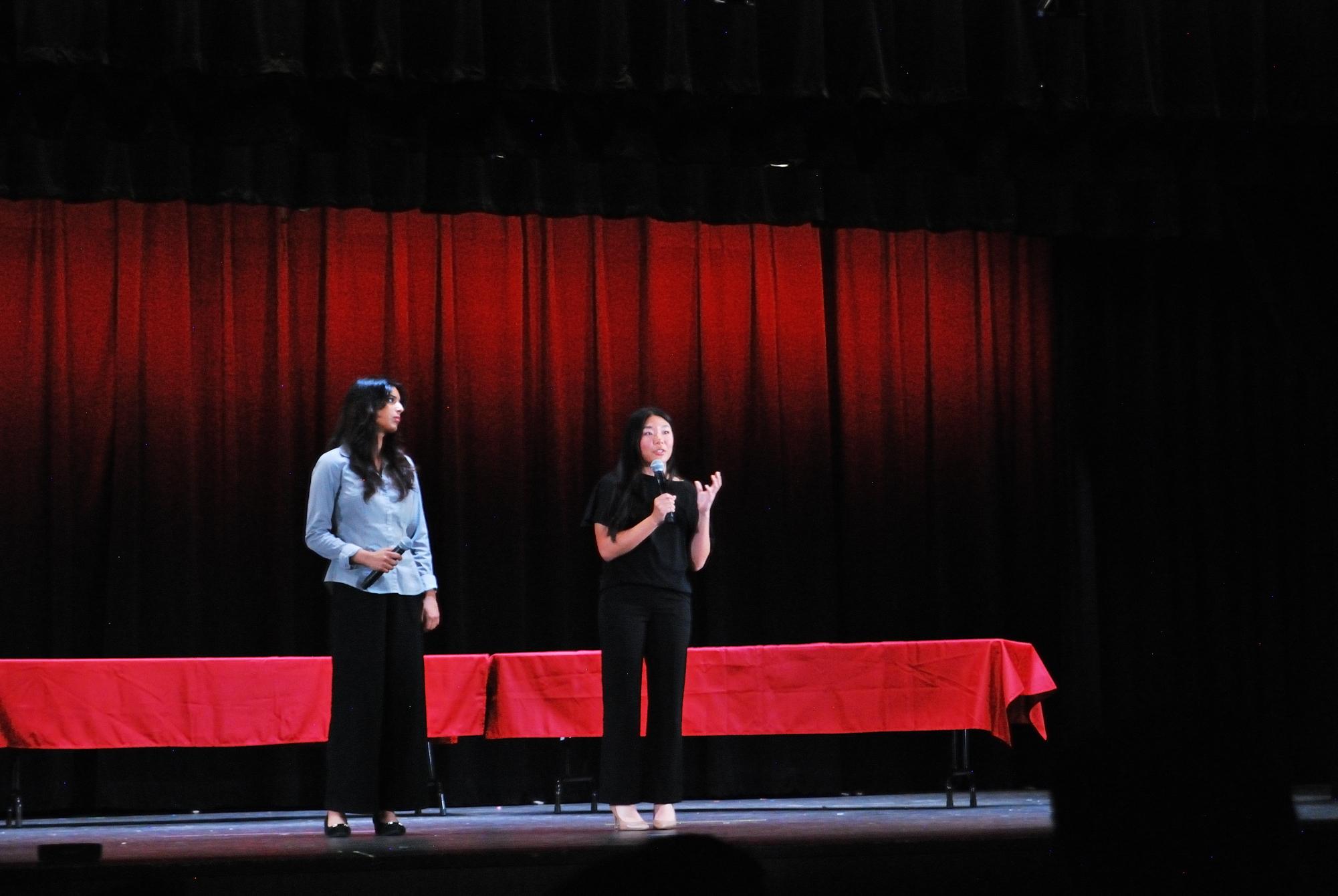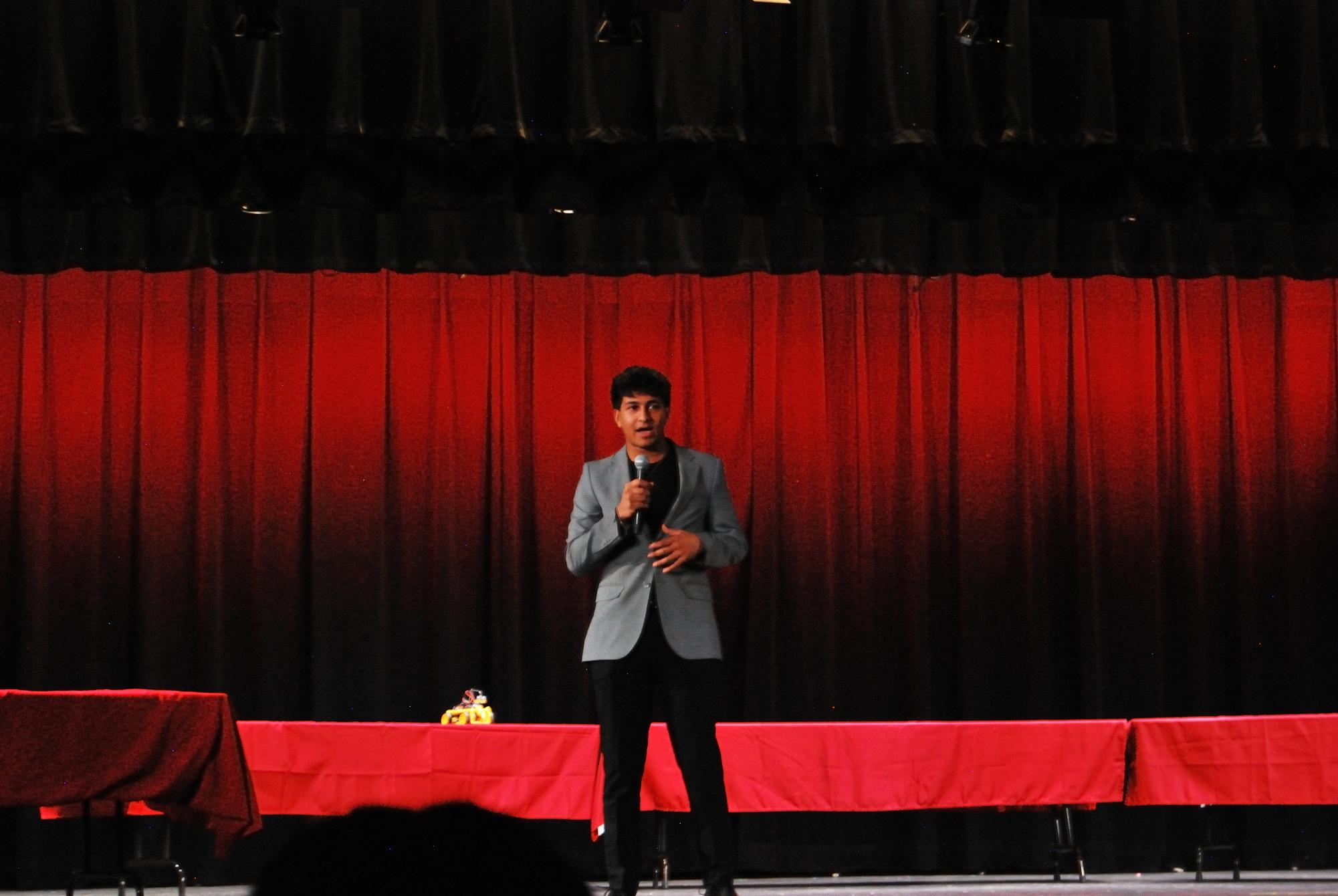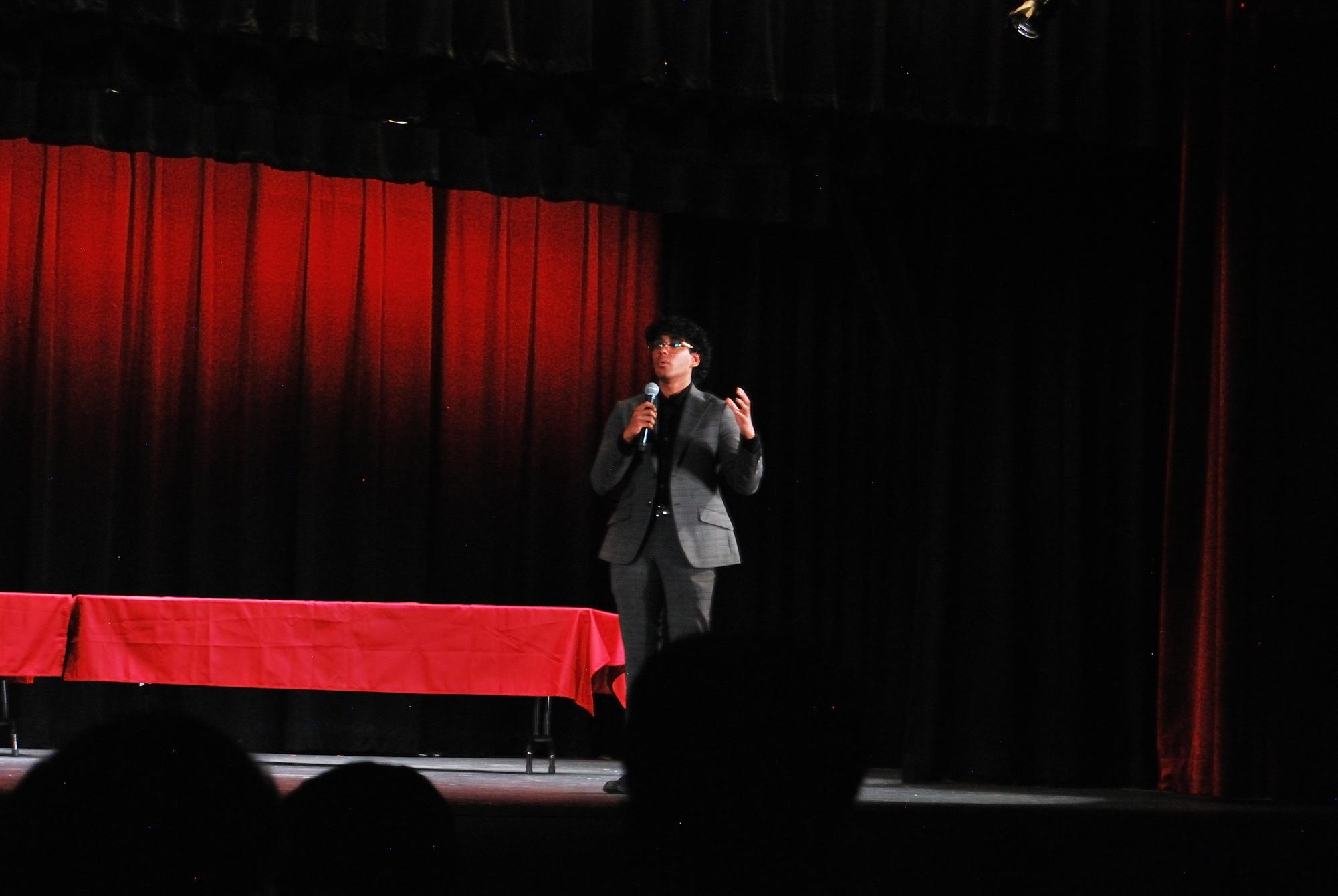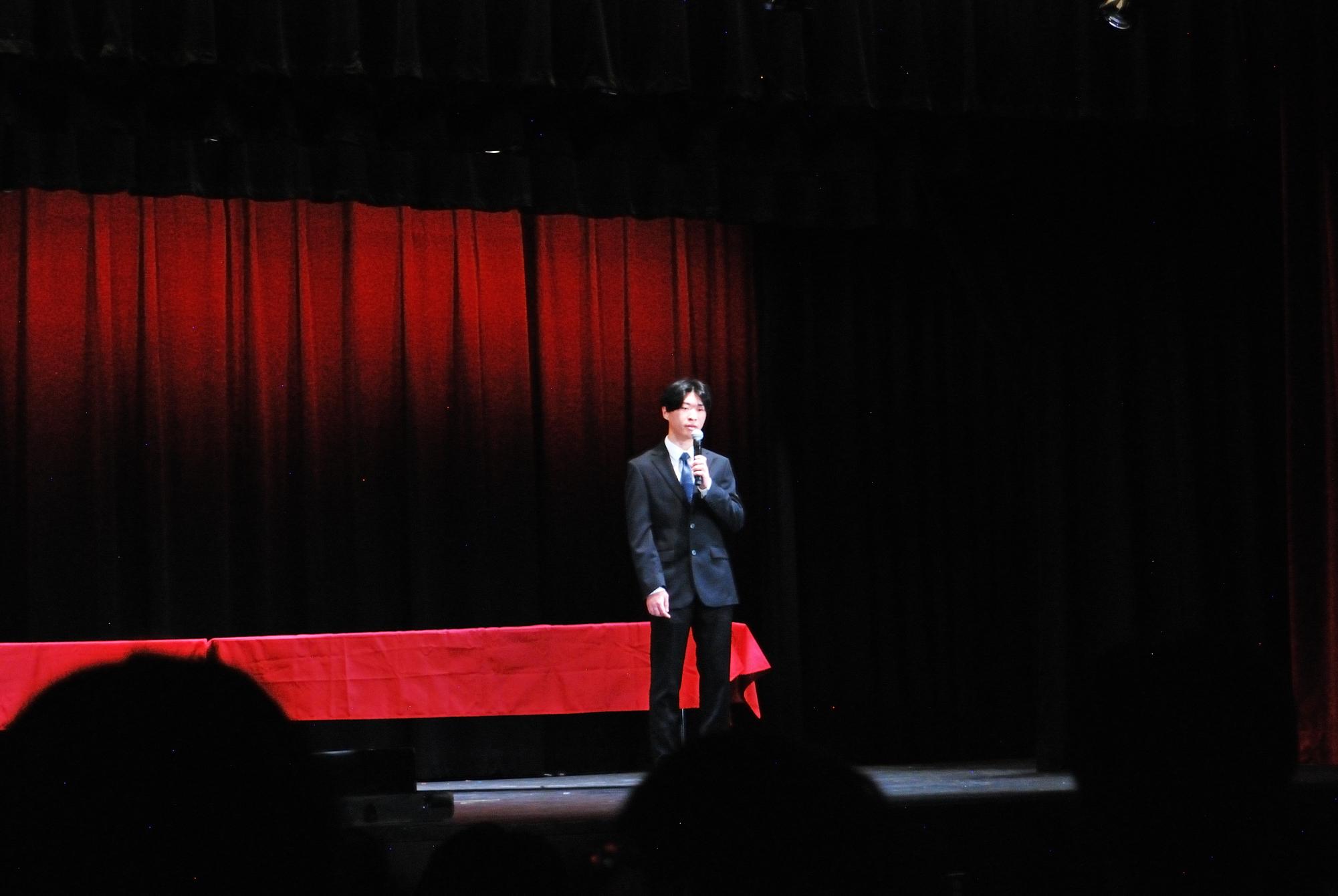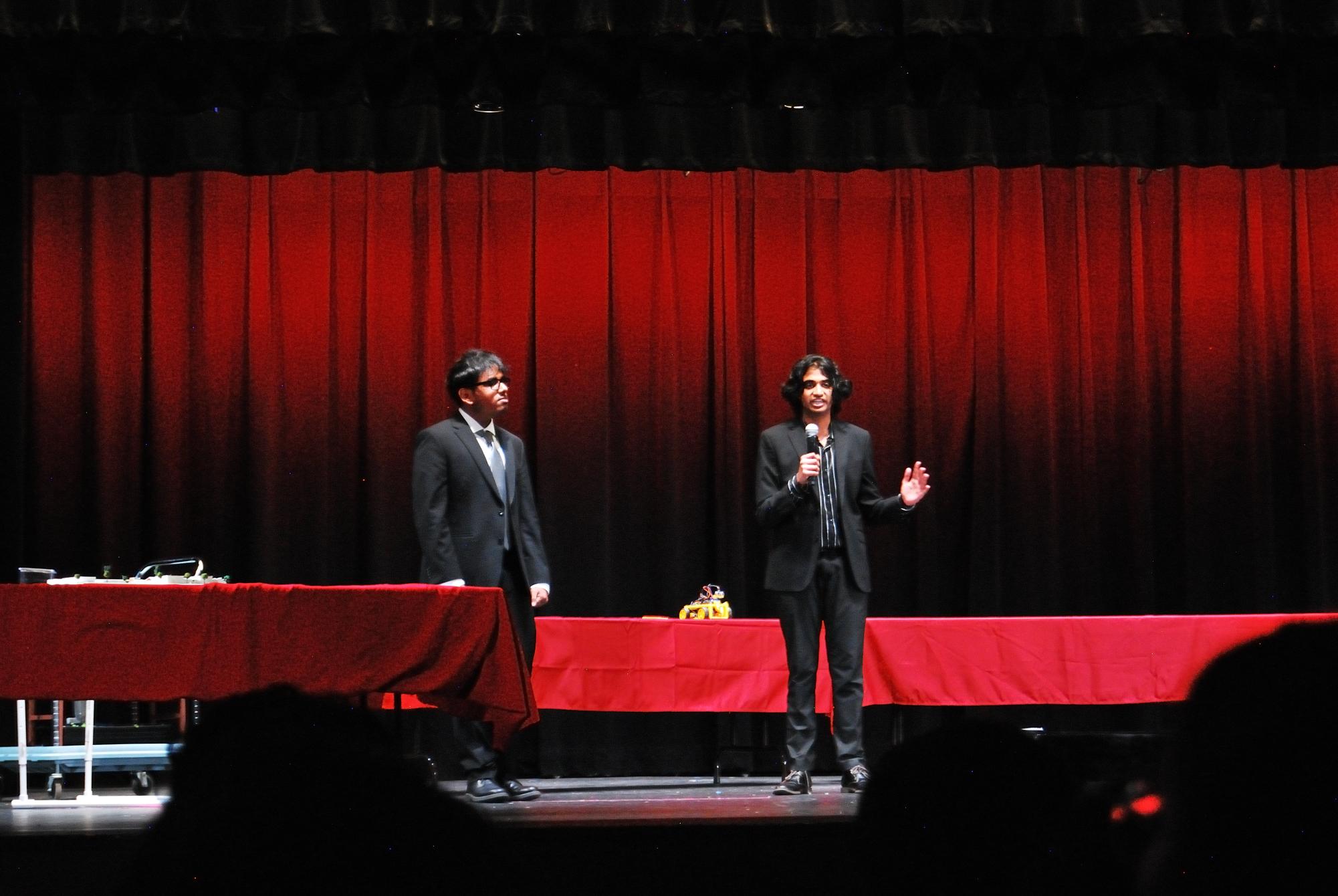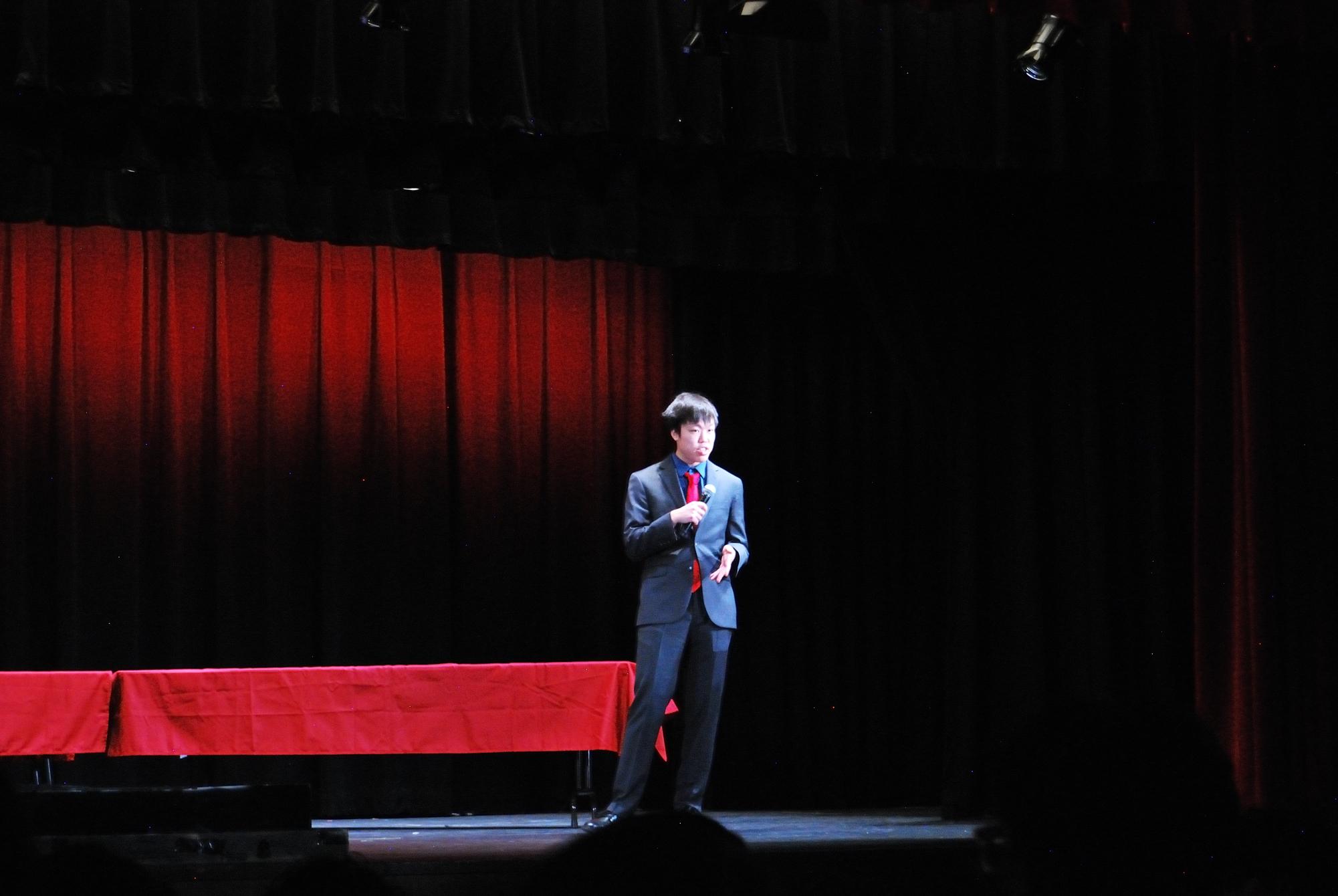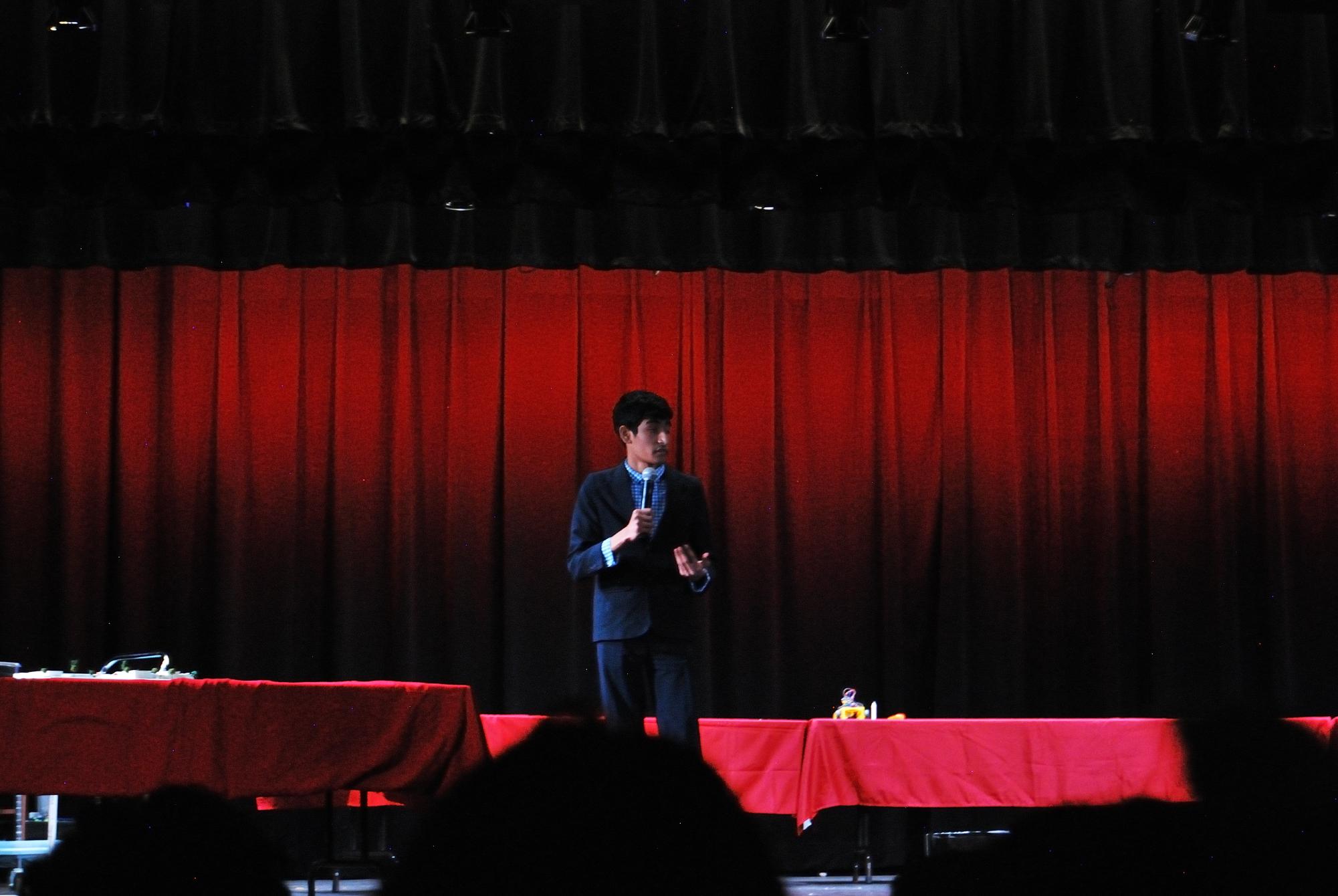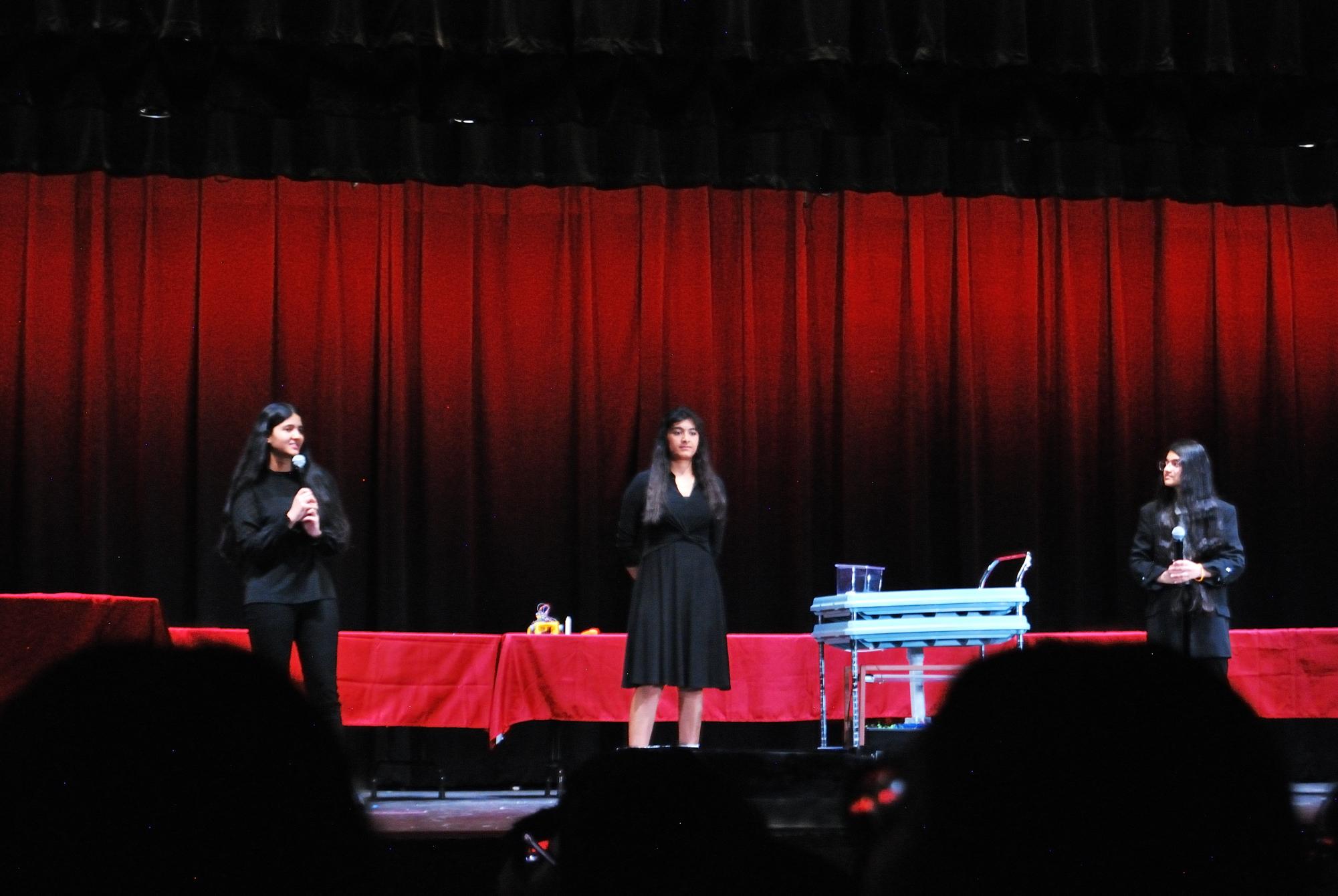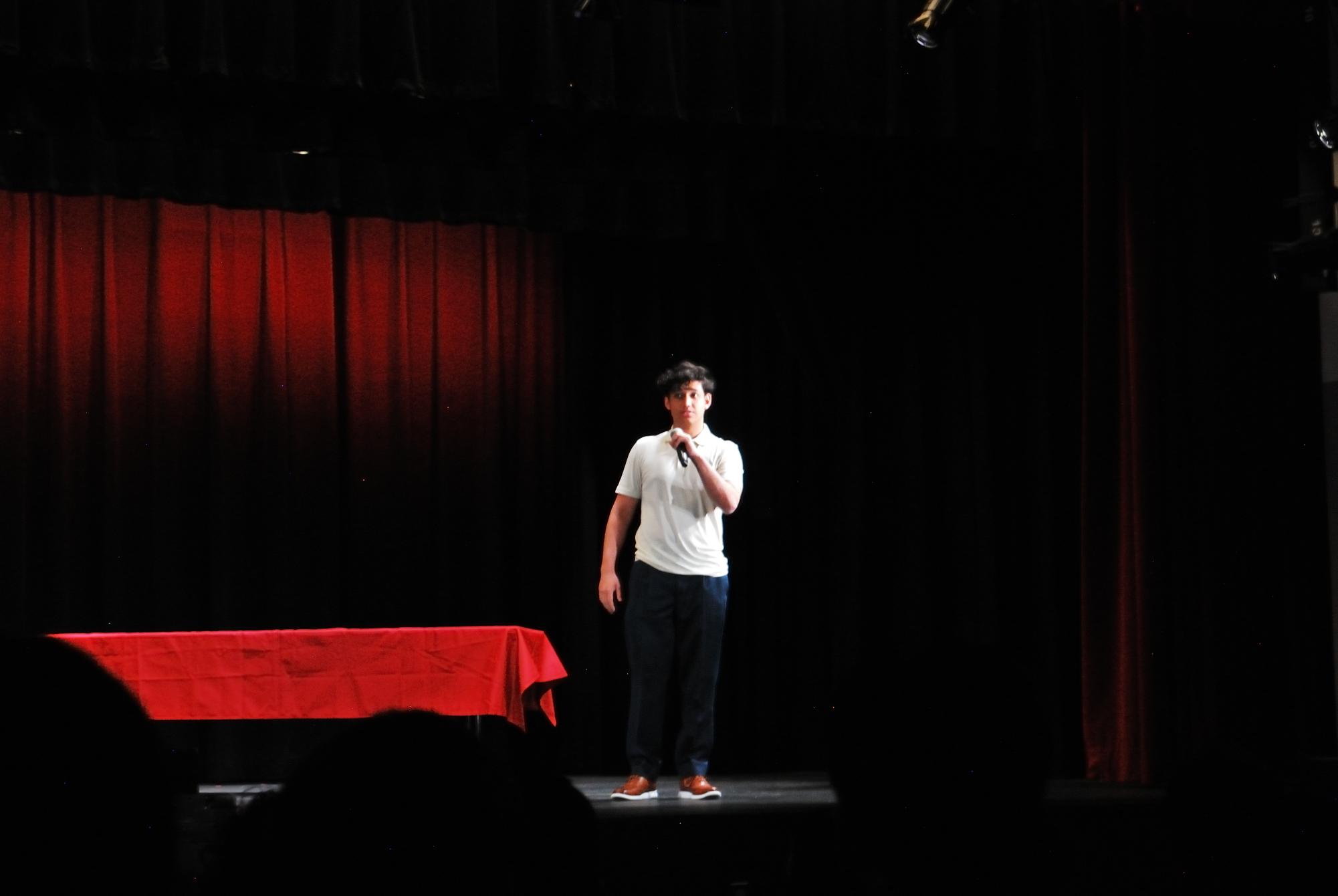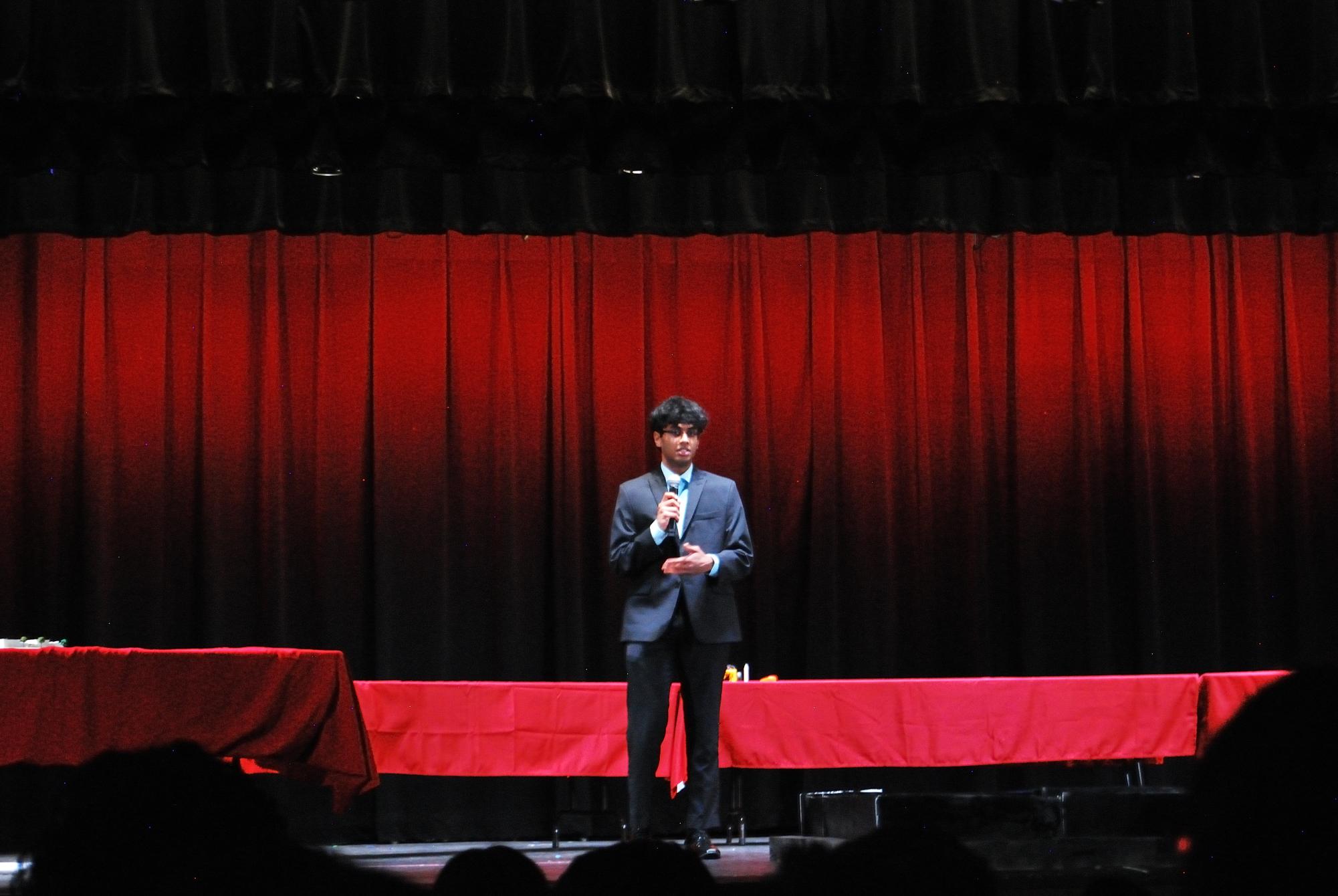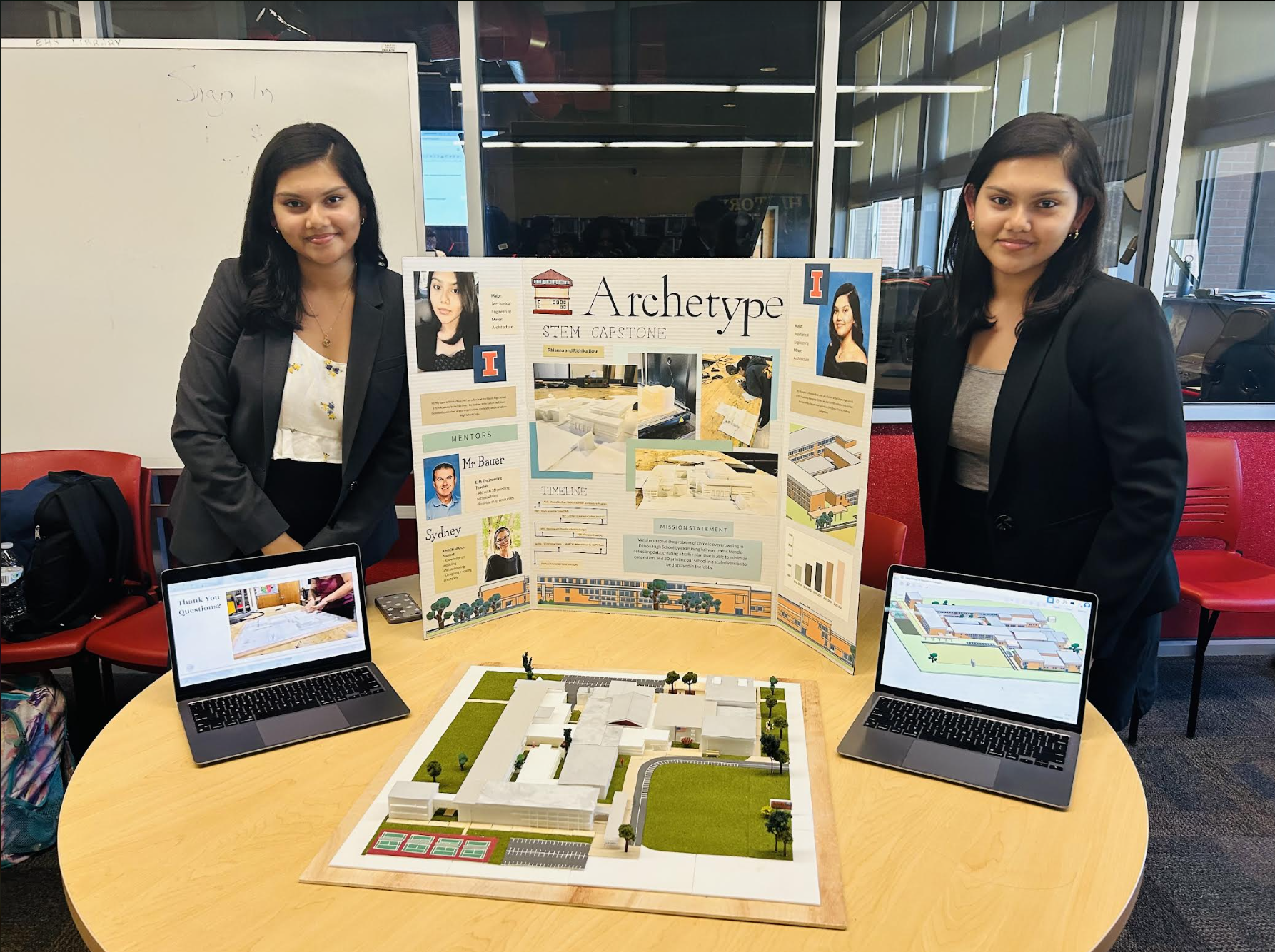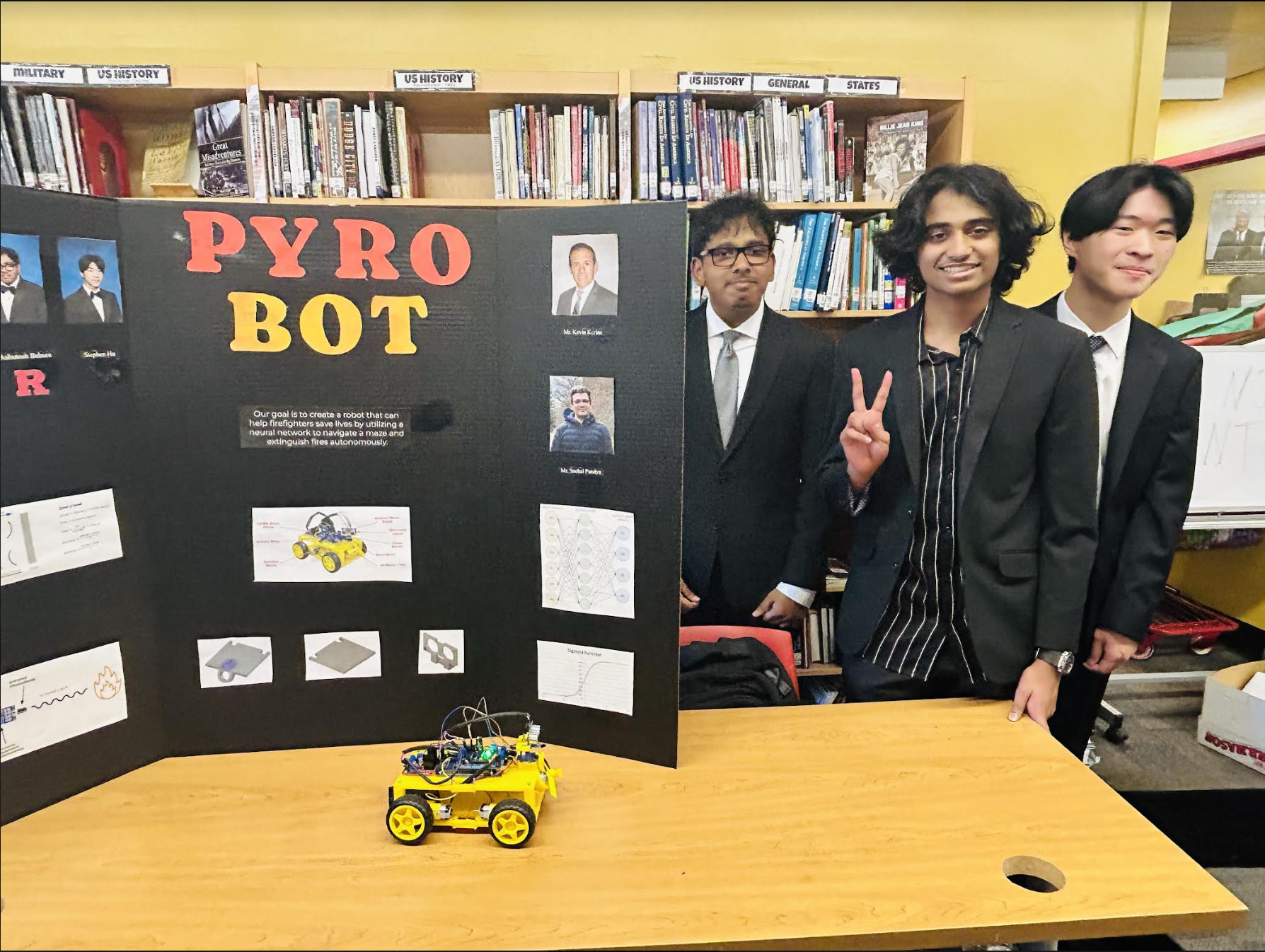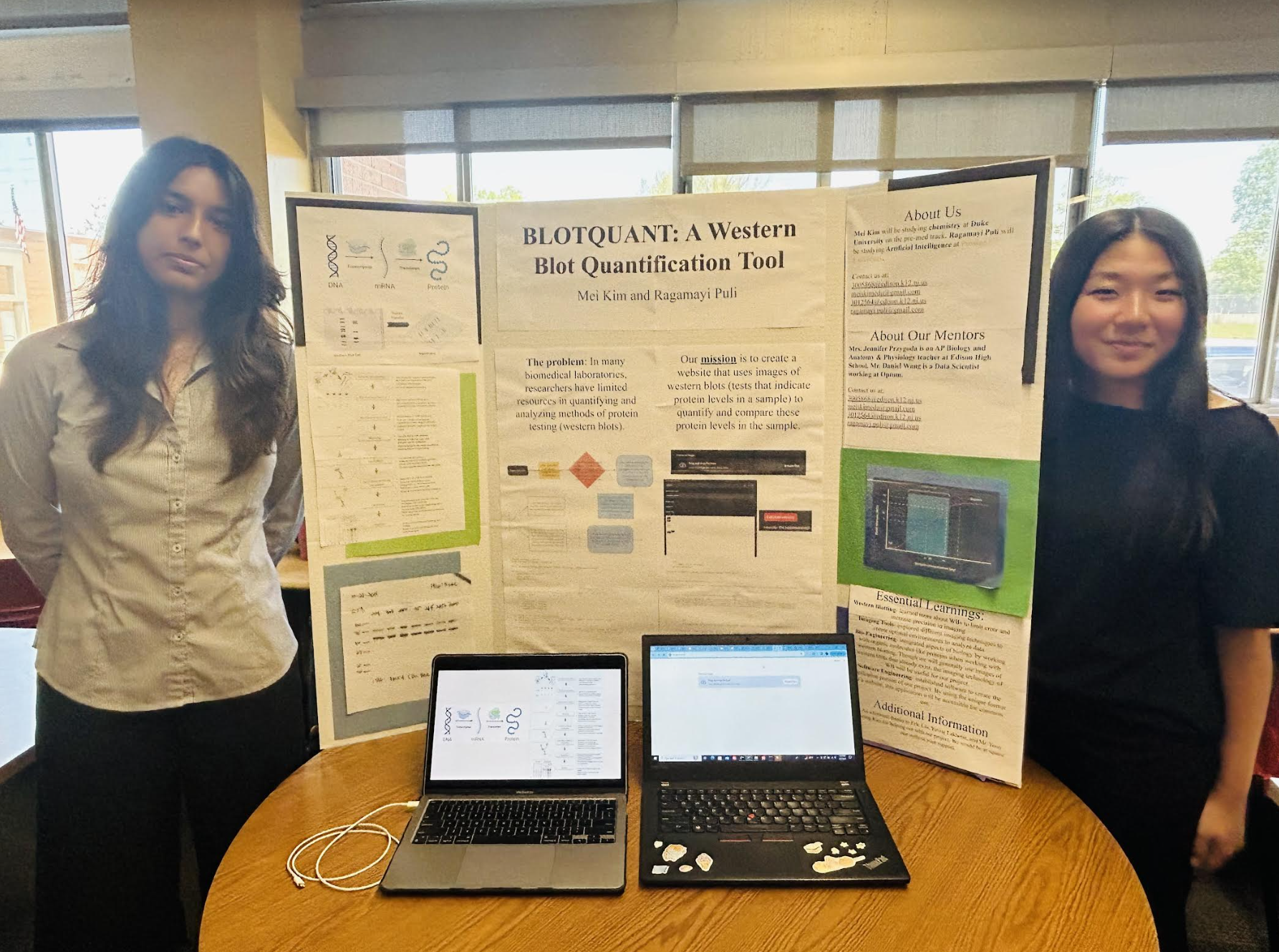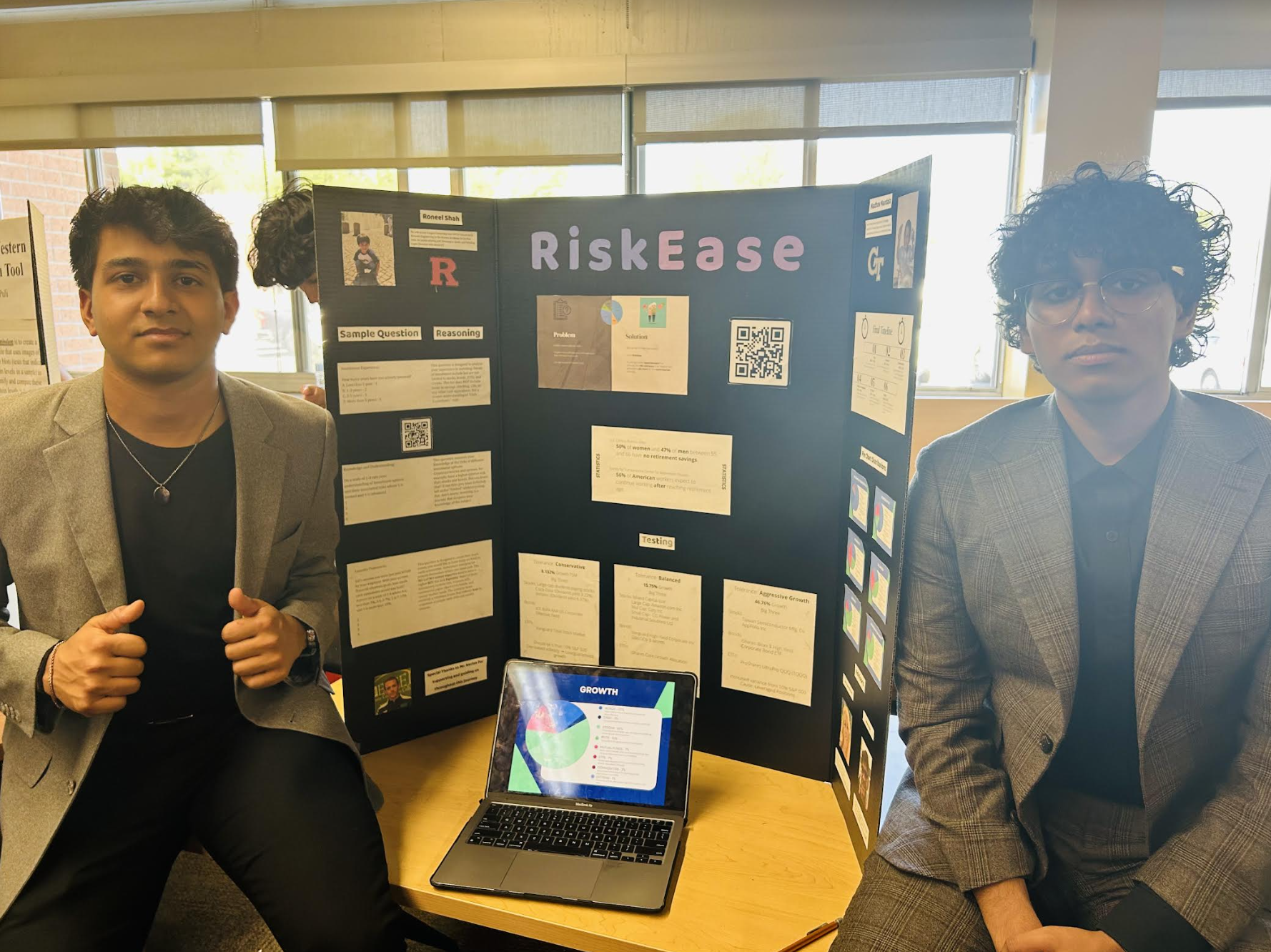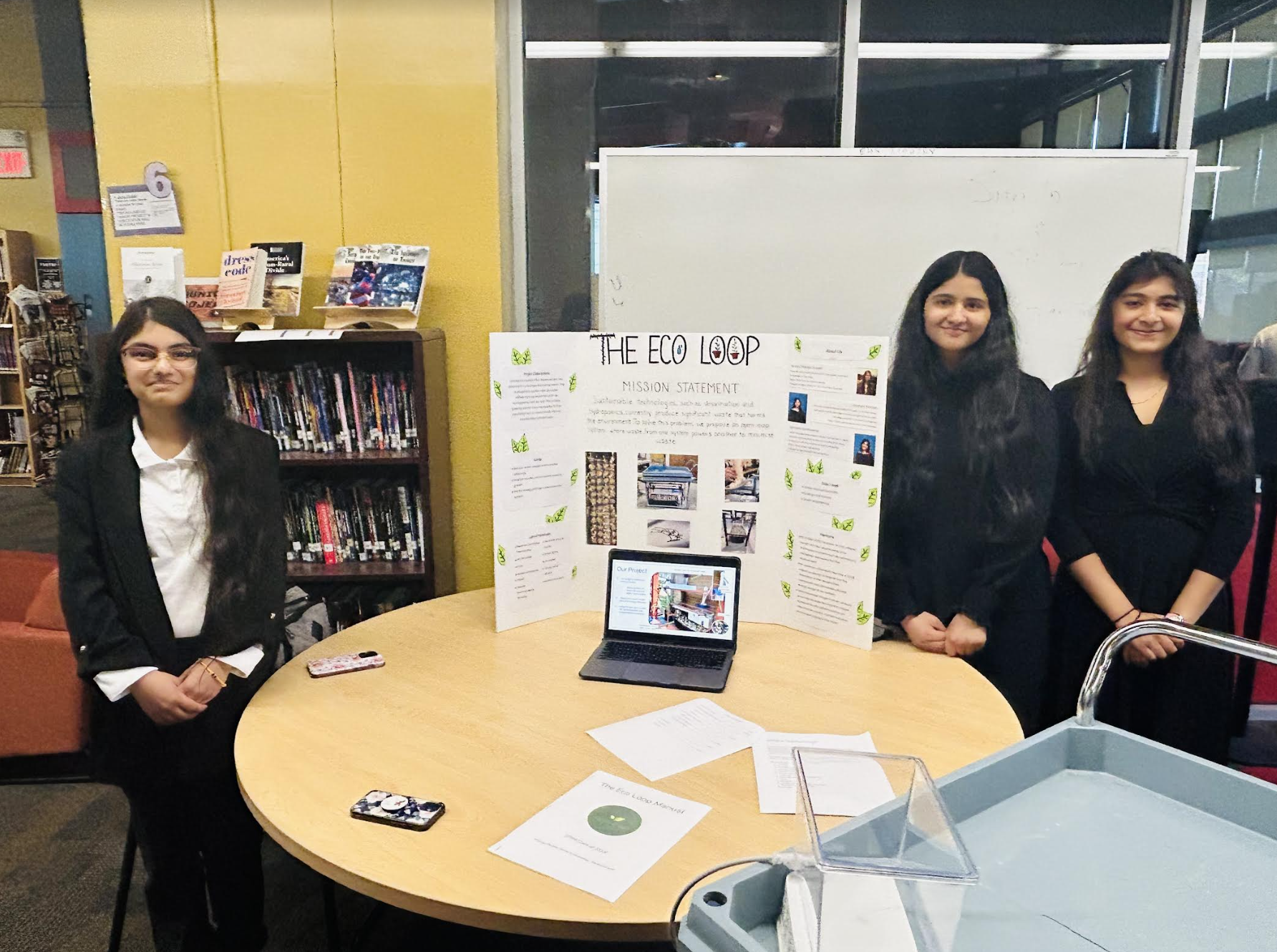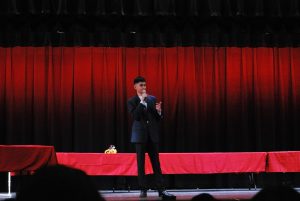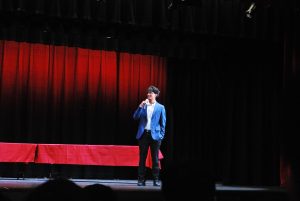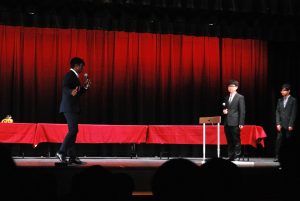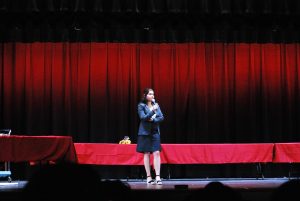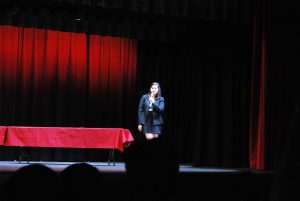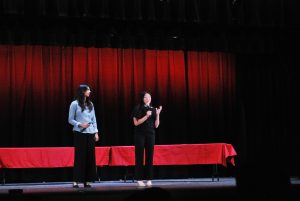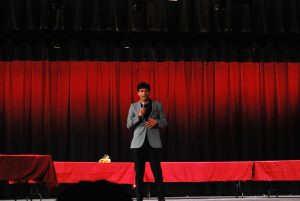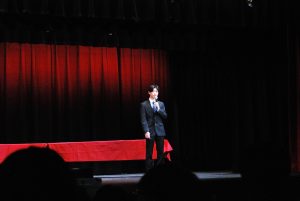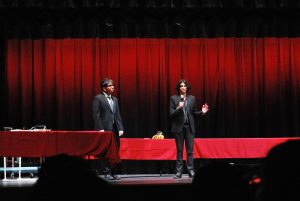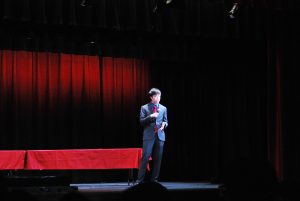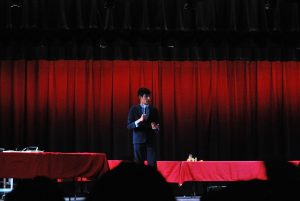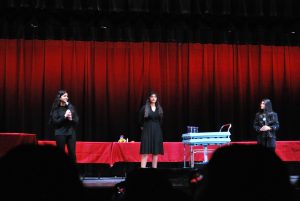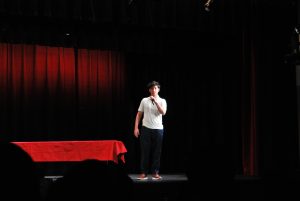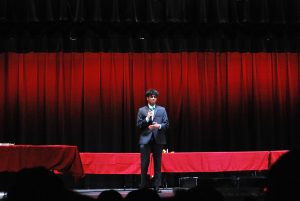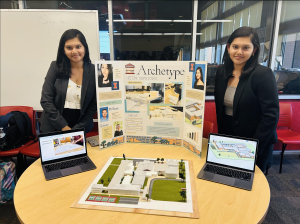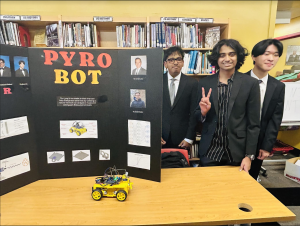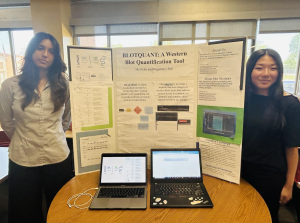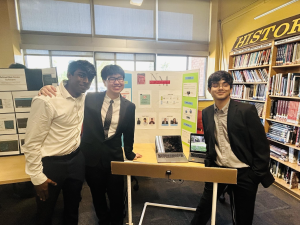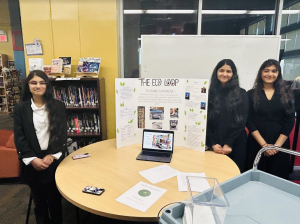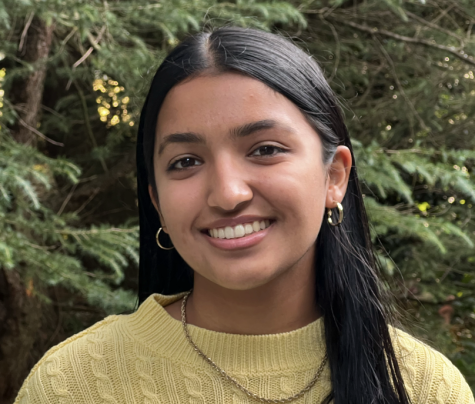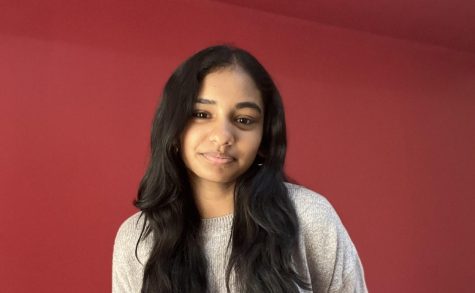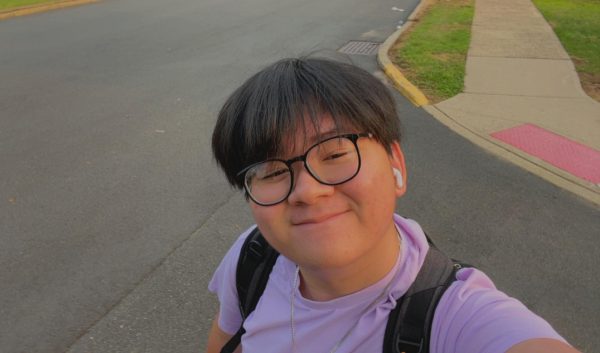Seniors of the Edison High School STEM Academy took to the auditorium on May 2 to present their capstone projects, which they had been working on for over a year. Developing and proposing the idea a year earlier, these students continued to work in groups or pairs to create entirely new and innovative projects. With underclassmen, advisors, administrators, teachers and parents watching; they concluded their hard work with presentations that included the timeline, logistics, demonstrations, and real-world applications of their projects. They later continued to present their projects at the Capstone Expo in the Media Center.
The capstone project ended up being a useful learning experience for both students and viewers alike. Collaboration was key for each group of students, who spent months working together, to create something innovative.
“We learned how to collaborate as a team and come up with solutions to various obstacles that showed up,” said Stephen Hu ‘24.
There was also appreciation for the administrators, mentors, and teachers who played an important role in providing this opportunity and guiding the students.
“Making sure I communicated with Mr. Kerins and our mentors were critical in ensuring that our project went smoothly, and that we accurately hit project check deadlines,” said Madhav Mandala ‘24.
The presented projects included the following:
DataScribe:
Atharva Inamdar ‘24 and Devam Mondal ‘24 introduced their inventive chatbot program that automates data science and machine learning by taking in datasets and user questions in order to produce an intelligent answer based on industry standards. They foresee DataScribe enabling companies to use personalized large language models for better intake.
NavigateMate:
Ishaan Shetty ‘24, Syamantak Rout ‘24, and Vincent Liao ‘24 addressed the problem of hurdling for blind athletes by designing a navigation system that alerts the athlete of their proximity to a hurdle. Using Arduino, an open-source hardware and software provider, and a lidar sensor, they showcased a working demonstration of their project, which holds potential in increasing the inclusivity of sports.
Archetype:
Rithika Bose ‘24 and Rhianna Bose ‘24 designed and printed a three-dimensional model of Edison High School to scope out possible changes to address overcrowding problems. Created with TinkerCAD, data collection, and 3D printing, the model—which included many intricate details of the school—is intended to stay at EHS for future reference. Additionally, this project supported their idea of breaking up students into groups when creating schedules and assigning each a designated route to travel from class to class.
BlotQuant:
Mei Kim ‘24 and Ragamayi Puli ‘24 dedicated their capstone to creating an easier, more efficient, and more accessible way of analyzing and interpreting western blots, especially for younger researchers who don’t have access to the already sparse information and quantification sites. They programmed a website that allows users to upload an image to determine protein concentration.
RiskEase:
Roneel Shah ‘24 and Madhav Mandala ‘24 created a tool that relies on form response, backend data compilation, index processing, calculations, and email of financial asset distribution to give personalized guidance into investment.
PyroBot:
Parth Gundandi ‘24, Ashutosh Behura ‘24, and Stephen Hu ‘24 built a robot that can detect, navigate to, and put out fires. This robot is intended to help firefighters with their jobs and allow them to avoid dangerous and deadly situations as much as possible. They shared a demonstration in which the robot had to navigate through a windy maze in order to put out a candle at the very end.
School Bus Route Software:
Alvin Wu ‘24 and Sushanth Balaraman ‘24 programmed an application that generates the most efficient routes for school buses by compiling all the necessary stops for any respective bus riders. Going further, they expressed the potential of syncing the program to Genesis Parent Portal for student addresses. Their primary goal was to optimize school bus routes around daily attendance to minimize the currently long travel time and distance required for most commuters.
The Eco Loop:
For their capstone, Samarra Saravanan ‘24, Varsha Piskala Dinesh ‘24, and Ananya Pandey ‘24 focused on the environment, specifically the large amount of wastewater that is thrown back into the environment. By desalinating water through reverse osmosis membranes, they aimed to reduce waste production in the cleansing system. They developed an open-loop system wherein products from the desalination process power hydroponics. Due to its functionality, their model is kept at the school and is currently used to filter water for plants.
BuildIT:
Agastya Kalagarla ‘24 and Jeet Jagtap ‘24 aimed to help make premeditated building choices through their program by identifying areas that do or do not have potential for construction. They developed an artificial intelligence (AI) and drone imagery-based solution to detect regions of poor build capability in wetlands to help future developers. Furthermore, they tested their project with pictures of our very own EHS land and shared potential applications of this program on wetland ecosystems, wildlife conservation, and water pollution.













